To be informed about sarcoidosis and other ild care in different countries we ask colleague doctors to summarize the prevalence, the research and important websites, etc. We would like to ask your collaboration: If a column of your home country is not available yet, feel free to contact us and we will ask a doctor to write a nice one concerning this particular item (sarcoidosis and/or ild) in your own country. Or, as a doctor, feel free to write one. This document should be readable for doctors, and patients as well. Thanks in advance.
| Australia Belgium Brasil China Croatia Finland France Germany Greece |
Australia
WASOG provides an opportunity for those interested in sarcoidosis to engage with others who have a passion for this condition which in Australia, tends to be regarded as a thoracic condition and thus comes under the domain of chest physicians.However, anyone who has had any experience with sarcoidosis soon realises that this is just one manifestation of this disease which can affect almost any organ. In Australia, sarcoidosis tends to be treated by many inexperienced with this condition with corticosteroids which are only a part of the armamentarium of drugs available. There are now newer biological agents available such as Infliximab but as these are expensive drugs with peculiar side-effects, it is important to use these agents wisely and to be aware of their limitations and pitfalls. FDG-PET scanning has also become a useful test in the diagnosis and management of sarcoidosis and by meeting with sarcoidosis experts, it will be possible to gain first-hand experience from those who have used this.
About the author
In 1975, Roger K.A. Allen, graduated in medici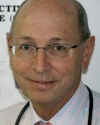 n from the University of Queensland with First Class Honours and the University Medal. He trained in thoracic and sleep medicine in Melbourne, becoming Fellow of the Royal Australasian College of Physicians (1982) and a Fellow of the American College of Chest Physicians (1983) and was awarded a Doctor of Philosophy, University of Melbourne for his work on sarcoidosis. From 1987-95 he was Associate Professor at The Prince Charles Hospital, Brisbane, and from 1995-2005 consulted at the St Andrew’s War Memorial Hospital, Brisbane, seeing Active Service as LTCOL with the United Nations in East Timor in 2000. Since 2005 he has consulted in private practice at the Wesley Hospital, Brisbane. As an expert witness in asbestos diseases for over two decades, in 2009, he was appointed to the Medical Assessment Tribunal of The Workers’ Compensation Board and also as Professor, Faculty of Health Sciences and Medicine, Bond University. He is a member of the French respiratory and sleep societies and a long-standing member of the World Association for Sarcoidosis and Other Granulomatous Disorders of which he is on the Executive. He has published widely on sarcoidosis and attracts patients from throughout Australia. He is cited in the 2009 edition of Who’s Who in the World (Marquis). His research interests include benign asbestos pleural pain and FDG-PET scanning in sarcoidosis under the aegis of the Wesley Research Institute. He enjoys sailing his wooden cutter, learning Greek, writing including an autobiography of childhood, poetry and French.
n from the University of Queensland with First Class Honours and the University Medal. He trained in thoracic and sleep medicine in Melbourne, becoming Fellow of the Royal Australasian College of Physicians (1982) and a Fellow of the American College of Chest Physicians (1983) and was awarded a Doctor of Philosophy, University of Melbourne for his work on sarcoidosis. From 1987-95 he was Associate Professor at The Prince Charles Hospital, Brisbane, and from 1995-2005 consulted at the St Andrew’s War Memorial Hospital, Brisbane, seeing Active Service as LTCOL with the United Nations in East Timor in 2000. Since 2005 he has consulted in private practice at the Wesley Hospital, Brisbane. As an expert witness in asbestos diseases for over two decades, in 2009, he was appointed to the Medical Assessment Tribunal of The Workers’ Compensation Board and also as Professor, Faculty of Health Sciences and Medicine, Bond University. He is a member of the French respiratory and sleep societies and a long-standing member of the World Association for Sarcoidosis and Other Granulomatous Disorders of which he is on the Executive. He has published widely on sarcoidosis and attracts patients from throughout Australia. He is cited in the 2009 edition of Who’s Who in the World (Marquis). His research interests include benign asbestos pleural pain and FDG-PET scanning in sarcoidosis under the aegis of the Wesley Research Institute. He enjoys sailing his wooden cutter, learning Greek, writing including an autobiography of childhood, poetry and French.
publications | receptionrka@internode.on.net | personal page
Belgium
Sarcoidosis and other ild around the World: Belgium Epidemiology of sarcoidosis and interstitial lung disease in Belgium - Epidemiologic data only exists from the Northern part of Belgium, Flanders (Acta Clinica Belgica 2001), a study supported by the VRGT working group on ILD. The prevalence and incidence of interstitial lung disease is estimated at 6.27 per 100 000 and 1.00 per 100 000 per year, respectively. The most frequent diagnosis of interstitial lung disease are sarcoidosis (31%), idiopathic interstitial pneumonia fibrosis (20%, 1/3 accounting for IPF) and hypersensitivity pneumonitis (13%, most bird fancier disease). In this study patients with the diagnosis of sarcoidosis are stage I in 31%, stage II in 29%, stage III in 26% and stage IV in 3%.
In Belgium, every respiratory physician is trained to diagnose and treat different forms of interstitial lung diseases, including sarcoidosis.
Research regarding interstitial lung disease - At present only one center dedicates research to interstitial lung diseases. This lab is led by Prof.Dr.Wim Wuyts at the KULeuven. The University Hospitals Leuven has a specific clinical trial unit that coordinates different studies with promising therapies (tel secretariat +32 16346800) in ILD.
Referral center UZLeuven - A special outpatient clinic is organized at the University Hospitals Leuven, dedicated to patients with interstitial lung disease. Website: www.longfibrose.be
Two times a month a multidisciplinary meeting (MILO, Multidisciplinair Interstitieel Longlijden Overleg) is organized with a radiologist, pathologist, pulmonologist and an expert in occupational medicine to discuss the diagnosis and treatment options of patients presenting with interstitial lung disease.
Patient support groups - Sarcoidosis, vereniging voor Sarcoïdosepatiënten & Idiopathic pulmonary fibrosis, Belgische Vereniging voor Longfibrose
About the author
 Michiel Thomeer is a medical doctor with a specialisation in Pulmonary medicine and working at the department of respiratory medicine of the Ziekenhuizen Oost-Limburg, Genk, Belgium. He is part-time consultant for the care program interstitial lung diseases of the department of respiratory medicine at the University Hospitals Leuven, Belgium (www.longfibrose.be). He dedicates his clinical research mainly in pulmonary fibrosis and sarcoidosis.
Michiel Thomeer is a medical doctor with a specialisation in Pulmonary medicine and working at the department of respiratory medicine of the Ziekenhuizen Oost-Limburg, Genk, Belgium. He is part-time consultant for the care program interstitial lung diseases of the department of respiratory medicine at the University Hospitals Leuven, Belgium (www.longfibrose.be). He dedicates his clinical research mainly in pulmonary fibrosis and sarcoidosis.
Website: http://be.linkedin.com/in/mthomeer
Brasil
Sarcoidosis has a worldwide distribution and its incidence and prevalence is variable, depending on the geographic area. In Brazil, a continental country, inhabited by several population subgroups of different ethnic groups, cases of sarcoidosis can be found all over the country. However, there are no epidemiological studies and the prevalence and incidence of sarcoidosis in Brazil are still unknown. Besides, many cases of sarcoidosis are misdiagnosed. In our center around 20% of the cases with sarcoidosis were treated previously as tuberculosis.
In a ILDs database from a reference center of São Paulo, sarcoidosis was the third most frequent disease, diagnosed in 350 (15%) out of 2327 cases.
The disease was more common in females (64%) and the mean age was 51±13 years, greater in females (53±12 vs 46±13 years, p<0.001). This change in mean age was also found in other countries. Granulomas were found by transbronchial biopsy in 131 cases, from biopsies done from extrathoracic sites in 127 and by specimens obtained by surgical lung or mediastinoscopy in 45. In HRCT thoracic /hilar enlargement was seen in 151(43%), and features indicative of pulmonary fibrosis in 105 (30%) of the cases. There was no apparent thoracic involvement in 8% of the cases.
In fact, it is important to note that there might be a bias in the analysis of these cases, considering that this is a center to which patients are referred from sites. Nevertheless, collectively these data show that our case series is similar to others described in the literature, although more studies are still needed.
In Brazil we don’t have patient societies with ILD.
About the author
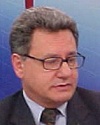 Carlos AC Pereira is a WASOG member and Assistant Professor at Federal University in São Paulo, where is Director of the program of research in ILD. He is also Clinical Director of Lung Diseases Department at Public Civil Servant Hospital in São Paulo, a reference Hospital for ILDs. He was President of Brazilian Thoracic Society during 2005-2006, and President of ILD Committee of Brazilian Thoracic Society during 2007-2011. He has published several papers and book chapters on ILDs, especially on IPF, sarcoidosis and hypersensitivity pneumonitis. He is Coordinator of a Guideline on ILD, to be published soon by Brazilian Thoracic Society.
Carlos AC Pereira is a WASOG member and Assistant Professor at Federal University in São Paulo, where is Director of the program of research in ILD. He is also Clinical Director of Lung Diseases Department at Public Civil Servant Hospital in São Paulo, a reference Hospital for ILDs. He was President of Brazilian Thoracic Society during 2005-2006, and President of ILD Committee of Brazilian Thoracic Society during 2007-2011. He has published several papers and book chapters on ILDs, especially on IPF, sarcoidosis and hypersensitivity pneumonitis. He is Coordinator of a Guideline on ILD, to be published soon by Brazilian Thoracic Society.
pereirac@uol.com.br | personal page
China
There are a number of sarcoidosis and ILD cases in China, but we have not done investigation around our whole country. In my hospital, there are 50 to 80 new sarcoidosis patients and 500 to 800 new ILD patients diagnosed annually. Because of the huge population in China, we can imagine that there are large numbers of sarcoidosis and ILD patients in China. There are some specialized website for sarcoidosis and ILD in part of our country, such as in Shanghai Pulmonary Hospital, you can check some information about ILD and sarcoidosis in their hospital website. Also we have website of Chinese Society of Respiratory Diseases and it can give information on sarcoidosis and ILD. There are some medical centers for sarcoidosis or interstitial lung diseases in some hospitals, such as Shanghai Pulmonary Hospital, Peking Union Medical College Hospital and The first Hospital of China Medical University.
I would like to urge my colleagues to attend the meeting of the WASOG in Beijing 2017 for communicating with international experts in these fields. I hope we can exchange clinical and study experience at the meeting and can stimulate our studying interest. In the future studies, we can do some research focus on looking for differences between Chinese patients and other countries’ patients, to screen major problems in Chinese patients research and explore some new methods to resolve the problems, finally to improve our national research for sarcoidosis and ILD in China. I hope we can join some international research for these patients and do collaborating studies with other countries experts. (updated February 2017)
About the author
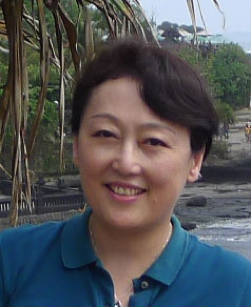 Huiping Li is Professor of respiratory diseases at Dept. of Respiratory Medicine of Shanghai Pulmonary Hospital, Tongji University School of Medicine in China. She got her Ph.D in 2008 from Suzhou University of China, got Master degree in 1992 from Tongji Medical University of China and finished her undergraduate study also in Tongji Medical University of China in 1982. She studied and worked in Pulmonary and Critical Care Medicine, Allergy and Clinical Immunology, Medical University of South Carolina (MUSC) from 2000.11 to 2001.5. She has been a physician for 35 years, and has been a pulmonologist for 25 years since 1992. Her areas of interest focus major on interstitial lung diseases (ILD), sarcoidosis, diffuse panbronchiolitis. She is the Fellow of ACCP (FCCP), vice chair of ILD group of Chinese Academy of Respiratory Diseases; vice president of Shanghai Academy of Respiratory Diseases; Chairperson of group of ILD of Shanghai Academy of Pulmonary Diseases and the Chairperson of Huadong Cooperation Group of ILD in China. Furthermore, she is a member of the Executive Committee of WASOG.
Huiping Li is Professor of respiratory diseases at Dept. of Respiratory Medicine of Shanghai Pulmonary Hospital, Tongji University School of Medicine in China. She got her Ph.D in 2008 from Suzhou University of China, got Master degree in 1992 from Tongji Medical University of China and finished her undergraduate study also in Tongji Medical University of China in 1982. She studied and worked in Pulmonary and Critical Care Medicine, Allergy and Clinical Immunology, Medical University of South Carolina (MUSC) from 2000.11 to 2001.5. She has been a physician for 35 years, and has been a pulmonologist for 25 years since 1992. Her areas of interest focus major on interstitial lung diseases (ILD), sarcoidosis, diffuse panbronchiolitis. She is the Fellow of ACCP (FCCP), vice chair of ILD group of Chinese Academy of Respiratory Diseases; vice president of Shanghai Academy of Respiratory Diseases; Chairperson of group of ILD of Shanghai Academy of Pulmonary Diseases and the Chairperson of Huadong Cooperation Group of ILD in China. Furthermore, she is a member of the Executive Committee of WASOG.
E-mail: liw2013@126.com | Personal Page
Croatia
The prevalence of sarcoidosis in Croatia is 4.5/100.000; the average age of pts is 44.9±16.5, and the ratio of women to men 1.4:1. The onset of the disease is from May to August in 51% of patients who frequently (44%) show acute onset and minor lung function impairment indicating that sarcoidosis in Croatia is usually a mild disease. We also studied the diagnostic value of transbronchial/transtracheal fine needle aspiration (TBFNA) cytology in the patients with mediastinal and/or hilar lymphadenopathy; overall diagnostic accuracy of TBFNA cytology in the diagnosis of sarcoidosis was 86.2%. We explored the association of human leukocyte antigen (HLA) alleles with sarcoidosis in Croatian patients; HLA-B8, DRB1*0301, and DQB1*0201 positive patients have a significantly higher risk of acute onset of the disease. We also studied the morphometric characteristics of macrophages nuclei in BAL fluid in patients with ILD-s and controls, trying to detect possible differences allowing distinguishing sarcoidosis from other lymphocytic alveolitis ILD-s. We participated in the studies of fatigue in sarcoidosis patients with a Dutch group of researchers. The WHOQOL-BREF Questionnaire as a Measure of Quality of life in our sarcoidosis patients has been investigated and the results have just been published. Now we are studying the indices of sarcoidosis activity, chitotrioxidase, polimorphisms of chitotrioxidases, and sarcoidosis lung functions, especially upon exertion Apart from sarcoidosis, we are studying idiopathic pulmonary fibrosis as we have increasing numbers of these patients, quite often IPF is combined with emphysema. The people in Croatia live longer, our knowledge of IPF has improved so the the diagnosis is earlier and more accurate in these patients.The referral center in Croatia for sarcoidosis and ILDs is at the University Hospital for Lung Disease, Jordanovac 104, 10000 Zagreb. The head of the Center is Professor Tatjana Peros-Golubicic, see below.
About the author
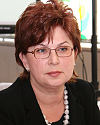 Tatjana Peros-Golubicic graduated at the Zagreb School of medicine in 1974. Her training as a pulmonologist at the University hospital for lung diseases “Jordanovac”, Zagreb, Croatia was completed in 1979. In 2013. she was elected Professor of Internal medicine at the Zagreb Medical School. Currently she is a consultant for interstitial lung diseases (ILD) in Croatia. She collaborates with several Centers of Excellency for ILD all over the world. Her interest in ILD has been grounded by participating in several projects, like “Immunogentics in sarcoidosis”, and publishing books. She is the author of three books, “Sarcoidosis&Interstitial lung disease”, Medicinska naklada, Zagreb, Croatia 2005., “Clinical Atlas of Interstitial lung disease”, Springer, London 2006. and „Lung in non-pulmonary and systemic disease“ , Medicinska Naklada, Zagreb, Croatia, 2013. She also published around 100 scientific and professional papers and chapters in several different books. She is the member of Croatian Medical Association, Croatian Respiratory Society, WASOG and ERS.
Tatjana Peros-Golubicic graduated at the Zagreb School of medicine in 1974. Her training as a pulmonologist at the University hospital for lung diseases “Jordanovac”, Zagreb, Croatia was completed in 1979. In 2013. she was elected Professor of Internal medicine at the Zagreb Medical School. Currently she is a consultant for interstitial lung diseases (ILD) in Croatia. She collaborates with several Centers of Excellency for ILD all over the world. Her interest in ILD has been grounded by participating in several projects, like “Immunogentics in sarcoidosis”, and publishing books. She is the author of three books, “Sarcoidosis&Interstitial lung disease”, Medicinska naklada, Zagreb, Croatia 2005., “Clinical Atlas of Interstitial lung disease”, Springer, London 2006. and „Lung in non-pulmonary and systemic disease“ , Medicinska Naklada, Zagreb, Croatia, 2013. She also published around 100 scientific and professional papers and chapters in several different books. She is the member of Croatian Medical Association, Croatian Respiratory Society, WASOG and ERS.
E-mail: tperos.golubicic@gmail.com
Finland
The annual incidence of sarcoidosis in Finland was 11/100.000 inhabitants and the prevalence 28/100 000 (1984 data based on hospital and out-patient records). The vast majority of the sarcoidosis patients have a favorable prognosis, however approximately 20 % of the patients develop a chronic, disabling disease. Patients with Löfgrens syndrome constitute about one fifth of all new patients with sarcoidosis.
In Finland, there is no special register concerning sarcoidosis in Finland.
At present sarcoidosis research is performed mainly at the University of Helsinki. There are two sarcoidosis research groups:
The goal of the first sarcoidosis research group is to study the role of the MHC genes for the prognosis of pulmonary sarcoidosis. The research is led by prof. Olof Selroos, Anne Pietinalho, MD, PhD and Maisa Lokki, PhD. The clinical patient data and blood tests are from patients in the whole country. We have carefully refined the clinical phenotypes and the candidate genes studied are functionally important. The preliminary results show that HLA class II and III genes are associated with the severity of disease course. In addition to pulmonary sarcoidosis, other phenotypes, such as heart sarcoidosis, are studied as well. Contact e-mail address annika.wennerstrom(at)helsinki.fi.
The goal of the second sarcoidosis research group is to study the incidence, prevalence and prognosis of cardiac sarcoidosis (CS) in Finland and mRNA in endomyocardial biopsies in CS patients. The research is led by Dr Markku Kupari on Department of Cardiology at Helsinki University Central Hospital. The department has set up a dedicated outpatient clinic for systematic follow-up of patients with CS. We have found in patients presenting with typical clinical symptoms (heart failure, ventricular arrhythmias, AV block) and imaging findings that repeated, imaging-targeted myocardial biopsies or biopsies of FDG-PET positive mediastinal lymph nodes increase the sensitivity of diagnosis several fold. Contact e-mail address riina.kandolin(at)hus.fi.
IPF
The prevalence of IPF in Finland was estimated to be 16-18/10 000 based on the hospital data bases during the years 1997-1998. The number of familial cases was 3.3-3.7%. The survival of Finnish IPF patients (2.5-5 years) does not differ from the survival numbers published worldwide. The epidemiological data on the other ILDs is not available.
The nationwide pulmonary fibrosis registry has recently been established. The goal of the registry is to collect all the Finnish voluntary patients diagnosed with IPF, NSIP (and AIP) into the web-based secured database. At first the patient recruitment is going to happen through the consortium including collaborators from all the university hospitals. The first patients are to be recruited during this year (2011).
The research on pulmonary fibrosis is performed at the Universities of Helsinki and Oulu. Lung Factor is a research group founded by Professor Vuokko Kinnula at the University of Helsinki, Finland. One of the main research interests include early assessment of lung damage in pulmonary fibrosis. The research methods combine clinical patient research and basic science methodology. Contact e-mail address vuokko.kinnula(at)helsinki.fi. The group of Marjukka Myllärniemi has identified a molecule Gremlin as a potent factor in the pathogenesis of IPF. At present the group is focused on screening and testing the promising therapeutic molecules on IPF. Contact e-mail address marjukka.myllarniemi(at)helsinki.fi. In order to identify the genetic factors and thereafter to better understand the pathogenesis of IPF the group including Ulla Hodgson, professors Tarja Laitinen, Pentti Tukiainen, and Juha Kere identified ELMOD2 as a promising candidate gene for IPF. At present the studies are ongoing and led in Karolinska University by Ph.D. Ville Pulkkinen. The research group led by Riitta Kaarteenaho, MD, PhD at the University of Oulu is investigating the pathogenesis of fibrotic respiratory diseases using small volumes of BAL fluid and culturing for example myofibroplasts and other mesenchymal cells. Contact e-mail address riitta.kaarteenaho(at)oulu.fi.
The Pulmonary Association Heli is Finland's largest social and health organization for patients with all respiratory diseases. They give information and organize courses and meetings also for the patients with sarcoidosis and other ILDs. Also a particular network for heart sarcoidosis patients has been grounded.
About the authors
Anne Pietinalho is mainly a clinician, working as the chief of respiratory department in Helsinki University Hospital/Peijas Hospital. She has also made research on sarcoidosis since 1989, concerning epidemiology, treatment and genes of the disease. The other respiratory fields she is particularly working on are asthma, COPD and smoking cessation. She has published approximately 80 original papers, reviews and book chapters and is since 1991 a member of the World Association of Sarcoidosis and Other Granulomatous disorders (WASOG).
E-mail1: anne.pietinalho@filha.fi | E-mail2: anne.pietinalh@hus.fi
Ulla Hodgson is working as a senior consultant in Helsinki University Hospital. Most of her patients suffer from various ILDs, rare pulmonary diseases, PAH or have been transplatated. She belongs to a multidisciplinary ILD team comprising pulmonary physicians, pulmonary radiologists and pathologists, to a lung transplantation team, and to a nationwide advisory board for occupational interstitial diseases. She has contributed in studies mainly on the epidemiology and genetics of IPF, also on LAM, COPD, and infectious and occupational respiratory diseases.
E-mail address ulla.hodgson@hus.fi
France
In 2006, we created a Working Group on sarcoidosis named Groupe Sarcoidose Francophone (GSF), an official scientific group of the Société de Pneumologie de Langue Française (SPLF). As with any official group of the SPLF, GSF needs to meet several goals: develop scientific projects; record experience with new treatments; discuss difficult cases according to diagnosis or treatment; elaborate recommendations for sarcoidosis in France according to Haute Autorité de Santé guidelines; answer questions concerning sarcoidosis from official authorities (Afssaps or others); answer to patient associations. GSF is also involved in aspects concerning sarcoidosis-like diseases like chronic berylliosis, common variable immunodeficiency associated granulomatosis, or drug induced granulomatosis.
Members of GSF comprise more than 100 physicians involved in sarcoidosis and sarcoidosis-like diseases. They are French-speaking physicians from all regions of France, including the French Caribbean isles, French Guyana and Reunion. There are also members from Belgium, Switzerland, Canada, Tunisia, Italy, United States of America and Australia. Various medical specialties are represented: mainly pneumology and internal medicine, but also ophthalmology, dermatology, cardiology, nephrology, endocrinology, hematology, pediatrics, radiology, pathology and professional and environmental diseases. The group also includes researchers in immunology, microbiology, genetics, cellular and molecular biology, epidemiology and methodology.
To date, four papers have been written, two of which are published, with one in revision and the fourth to be submitted in forthcoming weeks. An ongoing study of genetic transmission of familial sarcoidosis is in progress with already the inclusion of more than 50 families. A register of French patients with chronic berylliosis has been created. Many other works have been initiated.
Several members of GSF are members of WASOG and one of the aims of GSF is to promote the presence and involvement of French-speaking physicians interested in sarcoidosis in the WASOG.
About the author
 Dominique Valeyre is Professor of Chest diseases in University Paris-Nord, France, EU. Currently he is the head of pole Hématologie-Oncologie-Thorax in hospital Avicenne, Assistance-Publique Hôpitaux de Paris, Bobigny, France, EU and head of Pulmonary Department, in hospital Avicenne, Bobigny, France, EU. Moreover, he is responsable of “Centre de Compétence Maladies rares pulmonaires”. He is the current president of Société de Pneumologie de Langue Française (SPLF) and head of Groupe Sarcoïdose Francophone (GSF), official work group of SPLF. He is a member of various international organizations: WASOG, ERS, and ATS. His expertise focuses on sarcoidosis and other granulomatous disorders; idiopathic pulmonary fibrosis; interstitial lung diseases (ild) and connective tissue diseases-associated ild. In 2007 he received the Pierre Bourgeois Paris Prise en charge des sarcoïdoses sévères. He is the author of over 100 English peer-reviewed articles.
Dominique Valeyre is Professor of Chest diseases in University Paris-Nord, France, EU. Currently he is the head of pole Hématologie-Oncologie-Thorax in hospital Avicenne, Assistance-Publique Hôpitaux de Paris, Bobigny, France, EU and head of Pulmonary Department, in hospital Avicenne, Bobigny, France, EU. Moreover, he is responsable of “Centre de Compétence Maladies rares pulmonaires”. He is the current president of Société de Pneumologie de Langue Française (SPLF) and head of Groupe Sarcoïdose Francophone (GSF), official work group of SPLF. He is a member of various international organizations: WASOG, ERS, and ATS. His expertise focuses on sarcoidosis and other granulomatous disorders; idiopathic pulmonary fibrosis; interstitial lung diseases (ild) and connective tissue diseases-associated ild. In 2007 he received the Pierre Bourgeois Paris Prise en charge des sarcoïdoses sévères. He is the author of over 100 English peer-reviewed articles.
E-mail: dominique.valeyre@avc.aphp.fr
Germany
Sarcoidosis is an orphan disease but within the rare disorders it is a frequent one in Germany with a prevalence of 40 and an incidence of 12 in 100,000 inhabitants. An official and nationwide referral system for rare disease does not exist in Germany. However, recently the federal government started an initiative on rare diseases called NAMSE (Nationales Aktionsbündnis für Menschen mit Seltenen Erkrankungen) which aims at an improvement of patient care and research. Sarcoidosis patients and patients with any other interstitial lung disease benefit from the structures established by this initiative which stimulated two university hospitals, Freiburg and Tübingen, to establish comprehensive rare disease centers. However, in Germany there are only few departments of pneumology in university medical centers and, therefore, patients with pulmonary disorders need to search for the closest one taking care of interstitial lung diseases. The patient organisation “Deutsche Sarkoidosevereinigung” can help to find one for sarcoidosis and interstitial lung disease patients. For histiocytosis and pulmonary fibrosis two more patient organisations offer information and help: Erwachsenen-Histiozytose X und Lungenfibrose e.V.(E-Mail: d.kauschka@cityweb.de) and Lungenfibrose.de. Other source of high quality information are the German site of orphanet and the nationwide alliance of patient organisations called “ACHSE” (Allianz Chronischer Seltener Erkrankungen).
About the author
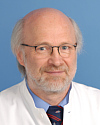 Joachim Müller-Quernheim worked from 1980-1982 as a Post-Doc in Immunology, at the University of Mainz, Germany. Till 1990, he had a home staff training appointment for internal medicine, pneumology and allergology, at the 3rd Medical Department, University of Mainz. From 1984-1986 he was appointed as a Post-Doc at the Pulmonary Branch of the National Heart, Lung, and Blood Institute, Bethesda, USA. In 1990 he finished his PhD thesis on Habilitation. From 1990–2002 he was a Senior staff member, at the 3rd Medical Department, University of Mainz and a Senior investigator, at the Research Centre Borstel; and senior staff member at the Medical Hospital Borstel, Germany, respectively. Currently, he is Full Professor of Internal Medicine and Pneumology, and head of the Department of Pneumology, University Medical Center Freiburg, Germany. He is the (co)author of more than 200 papers and book chapters. Moreover, he is a member of the ERS, ATS, WASOG and many international committees on sarcoidosis and other interstitial lung diseases. He received extramural research grants from German and international institutions and mentored many clinical and basic young scientists. He is an associate editor of the Eur Respir Journal and Respiration and member of several editorial boards including the Am J Respir and Crit Care Med, Sarcoidosis, Vasculitis and ILD, and Respiratory Research.
Joachim Müller-Quernheim worked from 1980-1982 as a Post-Doc in Immunology, at the University of Mainz, Germany. Till 1990, he had a home staff training appointment for internal medicine, pneumology and allergology, at the 3rd Medical Department, University of Mainz. From 1984-1986 he was appointed as a Post-Doc at the Pulmonary Branch of the National Heart, Lung, and Blood Institute, Bethesda, USA. In 1990 he finished his PhD thesis on Habilitation. From 1990–2002 he was a Senior staff member, at the 3rd Medical Department, University of Mainz and a Senior investigator, at the Research Centre Borstel; and senior staff member at the Medical Hospital Borstel, Germany, respectively. Currently, he is Full Professor of Internal Medicine and Pneumology, and head of the Department of Pneumology, University Medical Center Freiburg, Germany. He is the (co)author of more than 200 papers and book chapters. Moreover, he is a member of the ERS, ATS, WASOG and many international committees on sarcoidosis and other interstitial lung diseases. He received extramural research grants from German and international institutions and mentored many clinical and basic young scientists. He is an associate editor of the Eur Respir Journal and Respiration and member of several editorial boards including the Am J Respir and Crit Care Med, Sarcoidosis, Vasculitis and ILD, and Respiratory Research.
E-mail: joachim.mueller-quernheim@uniklinik-freiburg.de | personal page
Greece
Data derive from 8 Departments of Pneumonology all over Greece that registered every case of ILD that was alive on 2004 as well as for every new case from 1st January 2004 to 31st. Questions on the patients’ demographic data, the exact diagnosis and the procedures used to establish the diagnosis were included. Centers covering about 60% of the Greek population have been analyzed (Karakatsani 2009). Results: A total of 967 cases have been registered. The estimated prevalence of ILDs is 17.3 cases per 100,000 inhabitants. The estimated annual incidence of ILDs is 4.63 new cases per 100,000 inhabitants. The most frequent disease is sarcoidosis (34.1%), followed in decreasing order by IIPs (29.5%). Idiopathic pulmonary fibrosis (IPF) accounted for 19.5% of all ILDs, whilst usual interstitial pneumonia (UIP) was the most frequent histology among IIPs. The above-mentioned diseases are followed ILD associated with collagen vascular diseases (12.4%), cryptogenic organizing pneumonia (5.3%), histiocytosis (3.8%), and hypersensitivity pneumonitis (2.6%). Unclassified ILD or not otherwise specified accounted for the 8.5% of prevalent cases. Among incident cases, IIPs are the most frequent (32.4%) followed by sarcoidosis (23.2%). In a population of 251 sarcoid patients, (88 men and 163 women, mean age 46±13.7 years), coming from 4 centers in Greece we observed the following: The majority of patients were non smokers and had Stage II-III disease. 8% presented with Löfgren syndrome, 22% with erythema nodosum and 11% also with extra pulmonary involvement.
We urge our colleagues to assist to get updated information and knowledge on sarcoidosis and other ILDs.
Clinics and referral centers for sarcoidosis or interstitial lung diseases in Greece:
Department of Pneumonology, Medical School, Democritus University of Thrace and University Hospital of Alexandroupolis, Greece, HEAD: PROF DEMOSTHENES BOUROS, dbouros@med.uoa.gr
Department of Pneumonology, University of Thessaloniki, G. Papanikolaou Hospital, Greece, dpapakos@med.auth.gr
Department of Thoracic Medicine, Medical school, University of Crete, Greece, katerinaantoniou@yahoo.gr
1st Department of Pneumonology, G. Papanikolaou Hospital, Thessaloniki, Greece, galnikos@gmail.com
3rd Department of Pneumonology, ‘‘Sismanoglion’’ General District Hospital, Athens, Greece, vlasispo@hotmail.com
Department of Pneumonology, Medical School University of Thessaly, zdaniil@med.uth.gr
2nd Department of Pneumonology, Medical School, University of Athens and ‘‘Attikon’’ University Hospital, Greece, annakara@otenet.gr
Departments of Thoracic Medicine, ‘‘SOTIRIA’’ Chest Diseases Hospital, Athens, Greece, raptiang@otenet.gr, marydimadi@hotmail.com, g.birba@gmail.com (updated February 2017)
About the author
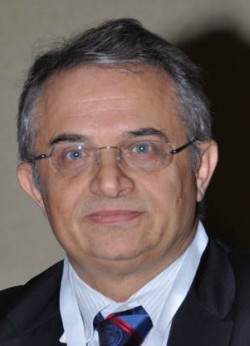 Demosthenes Bouros is a graduate of the Medical School of the Aristotelian University of Thessaloniki (1975) and a PhD of the University of Athens (1988). Research fellow at the Harvard University and Visiting Assistant Professor at the Boston University (1986-1988). Senior Research Associate at the Royal Brompton Hospital, and the National Heart and Lung Institute-Interstitial Lung Disease Unit at the Imperial College of London, UK (1998-1999). Assistant Professor and associate Professor in Pneumonology at the Medical School, University of Crete, and Professor of Pneumonology at the University of Thrace, Greece and head of the Department of Pneumonology at the University Hospital of Alexandroupolis. Currently is professor of Pneumonology and head of the Interstitial Lung Disease Unit of the First Academic Dept. at the National and Kapodistrian University of Athens, Greece. He is president of the Hellenic Society for rare diseases and orphan drugs. Editor of the book “Pleural Diseases” (2nd ed, Informa, NY, 2009) of the series Lung Biology on Health and Disease. He has published >400 articles in national and international peer-review journals, has >12.000 citations, H index 47, is member of the Editorial Board and reviewer of many medical journals and member of many international medical societies. He participated in the development of a number of official guidelines for IPF and IIPs (ERS/ATS/JRS/ALAT), etc. He has served in various ERS posts, awarded ERS visiting professorship at the Medical University of Vienna and selected as a fellow of the ERS (FERS).
Demosthenes Bouros is a graduate of the Medical School of the Aristotelian University of Thessaloniki (1975) and a PhD of the University of Athens (1988). Research fellow at the Harvard University and Visiting Assistant Professor at the Boston University (1986-1988). Senior Research Associate at the Royal Brompton Hospital, and the National Heart and Lung Institute-Interstitial Lung Disease Unit at the Imperial College of London, UK (1998-1999). Assistant Professor and associate Professor in Pneumonology at the Medical School, University of Crete, and Professor of Pneumonology at the University of Thrace, Greece and head of the Department of Pneumonology at the University Hospital of Alexandroupolis. Currently is professor of Pneumonology and head of the Interstitial Lung Disease Unit of the First Academic Dept. at the National and Kapodistrian University of Athens, Greece. He is president of the Hellenic Society for rare diseases and orphan drugs. Editor of the book “Pleural Diseases” (2nd ed, Informa, NY, 2009) of the series Lung Biology on Health and Disease. He has published >400 articles in national and international peer-review journals, has >12.000 citations, H index 47, is member of the Editorial Board and reviewer of many medical journals and member of many international medical societies. He participated in the development of a number of official guidelines for IPF and IIPs (ERS/ATS/JRS/ALAT), etc. He has served in various ERS posts, awarded ERS visiting professorship at the Medical University of Vienna and selected as a fellow of the ERS (FERS).
email: dbouros@med.uoa.gr, debouros@gmail.com
personal website: www.bouros.org
Iceland
The incidence of histologically proven sarcoidosis in Iceland is 4,04/100 000/year. The clinical picture is dominated by respiratory symptoms. Joint symptoms and general symptoms, such as fever, fatigue and night sweats are relatively common. Sarcoidosis in the eyes constitutes a smaller part. Sarcoidosis in the central nervous system or the heart isextremely rare in Iceland. The clinical picture of sarcoidosis in Iceland is in most cases relatively mild with a favourable outcome.
There is a study going on (The Icelandic Sarcoidosis Study) that collects all histologically proven sarcoidosis cases in Iceland from the year 1981. The background of the case is registrated, i.e. family history of sarcoidosis or other autoimmune diseases, working environment, drug history and allergies. The clinical symptoms of sarcoidosis, results of blood tests, HLA classification, spirometry values at the time of diagnosis, treatment and outcome are also noted, as well as the cases’ quality of life, measured by two kinds of questionnaires.
The researchers are also taking part in a multicenter study, The Genotype-Phenotype Relationship in Sarcoidosis, directed from University of Freiburg and PopGen in Kiel, Germany.
There is no website with information on sarcoidosis or a special patient sarcoidosis society in Iceland and no special clinic or referral center for sarcoidosis or interstitial lung diseases. The majority of patients are under care of specialists in lung diseases or rheumatologists, either at the University Hospital in Reykjavík or at private practices.
The incidence of nonspecific interstitial pneumonia in Iceland is about 0,7/100 000/year, organizing pneumonia about 1,97/100 000/year and chronic eosinophil pneumonia 0,23/100 000/year.
About the author
 Dr. Sigríður Ólína Haraldsdóttir is a specialist at the Dept. of Lung, Allergy and Sleep Medicine at Landspitali University Hospital, Reykjavik, Iceland. She takes part in all aspects of pulmonary and sleep medicine in the hospital. In recent years she has gathered clinical information on all histologically proven cases of sarcoidosis in Iceland and registered it in a database. This is an ongoing study, The Icelandic Sarcoidosis Study. She takes part in The Genotype-Phenotype Relationship in Sarcoidosis study on behalf of Iceland.
Dr. Sigríður Ólína Haraldsdóttir is a specialist at the Dept. of Lung, Allergy and Sleep Medicine at Landspitali University Hospital, Reykjavik, Iceland. She takes part in all aspects of pulmonary and sleep medicine in the hospital. In recent years she has gathered clinical information on all histologically proven cases of sarcoidosis in Iceland and registered it in a database. This is an ongoing study, The Icelandic Sarcoidosis Study. She takes part in The Genotype-Phenotype Relationship in Sarcoidosis study on behalf of Iceland.
E-mail: sigrohar@landspitali.is
India
Sarcoidosis like other ILDs has always been under diagnosed, being overshadowed by the overwhelming prevalence of tuberculosis in India. Sarcoidosis today is being more frequently recognized. The definite prevalence figures are not available from India, but the disease has moved from position of relative obscurity to a commonly recognized disease. At our department, which is a tertiary care referral centre for the Northern India North of Delhi, we have been diagnosing over 100 new cases every year since 2001 and other major centres would have similar experience. Facilities for diagnosis and treatment of sarcoidosis are available in most of the major cities in the country.
Fair amount of research studies are available from India. Early descriptions of disease were from Kolkata. Most recent research has come from Chandigarh (http://www.pgimer.nic.in) and Delhi (http://www.aiims.edu & http://www.vpci.org.in). Studies have shown that there is still a significant delay in diagnosis of sarcoidosis and nearly 25% patients receive anti tubercular treatment prior to diagnosis. Clinical presentations are similar to those seen in the West, however extra thoracic lymphadenopathy has been reported more frequently form India. In the face of high population prevalence of tuberculosis infection, differentiation from tuberculosis and possible role of mycobacteria in causation of sarcoidosis has been investigated and in this context usefulness of a negative tuberculin skin test in diagnosis of sarcoidosis has been reported. Several other aspects of sarcoidosis including risk factors, diagnosis, usual and unusual clinical presentations, lung functions and treatment have also been investigated.
About the author
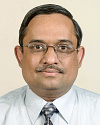 Dr. Dheeraj Gupta is Additional Professor of Pulmonary Medicineat the Postgraduate Institute of Medical Education and Research (PGIMER) in Chandigarh. India. He has a keen interest in sarcoidosis and interstitial lung diseases. He has published over 240 papers in international and national journals, co-edited two books and contributed 23 chapters in books. He is Associate Editor of Indian Journal of Chest Diseases and Allied Sciences.
Dr. Dheeraj Gupta is Additional Professor of Pulmonary Medicineat the Postgraduate Institute of Medical Education and Research (PGIMER) in Chandigarh. India. He has a keen interest in sarcoidosis and interstitial lung diseases. He has published over 240 papers in international and national journals, co-edited two books and contributed 23 chapters in books. He is Associate Editor of Indian Journal of Chest Diseases and Allied Sciences.
E-mail: dheeraj@indiachest.org | personal page
Iran
The National Sarcoidosis Group in Iran was established for the first time in 2012 at the Masih Daneshvari University Hospital, dedicated to patients with interstitial lung disease. Website: www.sa.sbmu.ac.ir
Prior to 2012, sarcoidosis patients in Iran were identified and treated by protagonist researchers such as Dr. Kazem Amoli, Dr. Mohammad Reza Masjedi, and Dr. Seyed Ali Alavi Foumani.
However, after the establishment of the sarcoidosis clinic in 2012, the sarcoidosis patients were systematically and coherently collected from all over Iran and treated according to the current guidelines of the world. The Sarcoidosis Clinic is the national center for the registration of sarcoidosis patients in Iran and is the only center recognized and accepted by the Ministry of Health of Iran. At present, the information of about 1100 sarcoidosis patients in Iran has been registered by this center. The Sarcoidosis Clinic OF Shahid Beheshti University also received the title of Center of Excellence from WASOG in 2019.
The members of this self founded group compose of qualified Pulmonologists, Pathologists, Immunologists, Radiologists, Rheumatologists and etc. The main mission of this group is strongly emphasis on research, to seek new opportunities on Sarcoidosis area which lead to best understanding of the disease in order to reach better treatment approach, or stronger ability of characterizing Sarcoidosis categories and we do committed to gather all Sarcoidosis project, findings and experiences from all around Iran. Most of the Iranian sarcoidosis patients are female (56.1%) with a mean age of 48.2 years and a mean ACE index of 73.4%. Also, 16.2% of patients with sarcoidosis show hypertension. 16.4% of sarcoidosis patients in Iran suffer from hyperlipidemia and 4.3% of patients have a history of ischemic heart disease. Red eyes is seen in 13.1% of patients and 12.4% of patients have type 2 diabetes. Also, 43.4% of patients show skin lesions.
In Iran 25(OH) Vit D deficiency, is known as a predicting factor, regarding the course of chronic sarcoidosis. This is likely to be due to the epidemy of moderate to severe vitamin D deficiency in Iran. A reverse correlation is mostly seen between the chronicity of sarcoidosis and ACE levels among the Iranian population.
Our goal is to help patients who are challenging with Sarcoidosis in order to cure or control of the progress of it and we do promise to provide disease information, newest treatment, diagnostic guidelines and news in Sarcoidosis. We urge our colleagues to assist to get updated information and knowledge on sarcoidosis and other ILDs.
About the author
Atefeh Abedini is Associate Professor of respiratory diseases at Dept. of Respiratory Medicine of Masih Daneshvari Hospital, Chronic Respiratory Diseases Research Center, National Research Institute of Tuberculosis and Lung Diseases (NRITLD), Shahid Beheshti University of Medical Sciences, Tehran-Iran. She studied and worked in Pulmonary, Shahid Beheshti University of Medical Sciences (SBMU) from 2011 to 2013. She has been a physician for 21 years, and has been a pulmonologist for 9 years since 2011. Her areas of interest focus major on interstitial lung diseases (ILD), sarcoidosis, and diffuse panbronchiolitis. She has been the Present Faculty member at Shahid Beheshti University of Medical Sciences since 2013. She has been the Present Director of Sarcoidosis Research group at Masih Daneshvari Hospital since 2013. She has been the Present Director of Emergency Ward at Masih Daneshvari Hospital since 2014. She has been the Present Director of registration group of Iranian Sarcoidosis patients since 2014. Furthermore, she is a member of the WASOG, American Thorasic Society (ATS), American Association for Bronchology and Interventional Pulmonology (AABIP), European Respiratory Society (ERS), European Bronchology and Interventional Pulmonology (EBIP), Iranian Pulmonology Society (IPS).
E-mail: dr.abedini110@gmail.com | Personal Page: www.sa.sbmu.ac.ir
Ireland
Ireland has one of the highest prevalence of Sarcoidosis worldwide. A recently published study defined the prevalence at up to 85 cases per 100,000 population . Patients presenting with Erythema Nodosum represent 25-30% of initial presentations. Professor Seamas Donnelly, is Professor of Medicine at Trinity College Hospital and he has established a National Pulmonary Fibrosis Referral Centre at Tallaght University Hospital, Dublin. A key part of the Centre’s activity is a specialised Sarcoidosis Clinic attended by over 500 patients referred from Ireland and abroad. Patients are cared for by a multi-disciplinary team with significant experience over many years of this disease. Enquiries may be made via
Phone:- (353)-(0)1- 414 4608 (Mrs. Lorraine Flood)
Fax: (353)-(0)1-2213750 or Email: kennem14@tcd.ie. (Mrs. Marie Claire Kennedy)
iSARC is a Sarcoidosis support network based in Ireland (www.isarc.ie). A registered charity it’s principal role is to provide support to patients and their families throughout Ireland. Additional roles include promoting awareness to the general public and healthcare professionals as well as funding research into the disease.
About the author
.jpg) Professor Seamas Donnelly is Professor of Medicine at Trinity College Dublin, Ireland. He is a recognized leader in Translational Medicine and his research epitomizes classical bench to bedside on an international stage. The work of his research group is leading to novel therapies in respiratory disease, particularly in Sarcoidosis, Idiopathic Pulmonary Fibrosis, Asthma and COPD. A medical graduate of University College Galway (UCG), he successfully competed previously for prestigious Wellcome Trust Fellowships at the University of Edinburgh and the Picower Institute in New York, an Institute affiliated to Rockefeller University. Returning to Ireland, he was one of the first clinicians to be awarded a Science Foundation Ireland (SFI) Principal Investigator Programme grant award. He is Editor-in-Chief of the QJM, the journal of the association of Physicians of Great Britain & Ireland. He is the Trinity lead on the Enterprise Ireland funded Health Innovation Hub Ireland (www.hihi.ie).
Professor Seamas Donnelly is Professor of Medicine at Trinity College Dublin, Ireland. He is a recognized leader in Translational Medicine and his research epitomizes classical bench to bedside on an international stage. The work of his research group is leading to novel therapies in respiratory disease, particularly in Sarcoidosis, Idiopathic Pulmonary Fibrosis, Asthma and COPD. A medical graduate of University College Galway (UCG), he successfully competed previously for prestigious Wellcome Trust Fellowships at the University of Edinburgh and the Picower Institute in New York, an Institute affiliated to Rockefeller University. Returning to Ireland, he was one of the first clinicians to be awarded a Science Foundation Ireland (SFI) Principal Investigator Programme grant award. He is Editor-in-Chief of the QJM, the journal of the association of Physicians of Great Britain & Ireland. He is the Trinity lead on the Enterprise Ireland funded Health Innovation Hub Ireland (www.hihi.ie).
Israel
Epidemiology of sarcoidosis in Israel
National epidemiological data are available only for 1956-1962. They had shown an annual incidence of 0.6 per 100000 and a prevalence of 1.6 per 100000 (Rakover 2009). Since then, only two studies have been performed: they came from the north of Israel (Ygla et al. 2002, 2006), and they reported an incidence of 0.8 per 100000. Most Israeli patients presented with pulmonary symptoms. The radiographic disease stages were 0=9.2%, 1=31.7%, 2=18.3%, 3=37.5% and 4=3.3%, with a mortality rate of 5%.
There are no specialized clinics and referral centers for sarcoidosis or other ilds in Israel. All respiratory physicians are specialists in diagnosing and treating them.
Israeli Research regarding Sarcoidosis
An association between sarcoidosis and CD14 was found by Fridlender et al (2006) who showed that CC homozygous patients in the CD14 gene promoter 159 C → T polymorphic site were older and had milder disease. Fireman et al (manuscript in preparation) calculated that the incidence of TNF-308A snps in sarcoidosis was similar to that of controls but correlated to TNF in serum and neutrophilia in induced sputum. Several other published studies looked at inflammatory cytokines (VEGF, MMP-9, TNF) and oxidative markers H2O2 and HO-1 in induced sputum supernatant (Fireman et al 2000- 2010).
Other Granulomatous Lung Diseases in Israel
We reported the first case of a dental technician with chronic beryllium disease (CBD) in Israel (Fireman et al 2001), followed by a series of 12 other Israeli dental technicians with CBD (2006). We recently (Fireman, 2010) described 21 CBD patients among 98 Israeli workers exposed to beryllium and other metals who were referred to our outpatient clinic between years 2002-2009. In a recent publication (Fireman at al 2012 "Chest wall shrapnel-induced beryllium-sensitization and associated pulmonary disease") we reported an unique case of a patient suffernig of sarcoidosis that after 30 years his diagnosis was changed to Chronic Beryllium Diseases due to the fact that he retained in his body numerous shrapnels in several wounds from the Yom Kipur War. This case demonstrates that retained beryllium-containing foreign bodies can be linked to a pathophysiologic response in the lung consistent with CBD.
Value of Attending WASOG and BAL meetings
Our colleagues will have access to excellent updated information and meet the most outstanding investigators in the field.
About the author
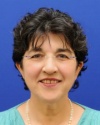 Lizy Fireman is Associate Professor of Occupational and Environmental Medicine in Tel-Aviv University. She is currently the Head of the Laboratory of Pulmonary and Allergic Diseases in the Tel-Aviv Sourasky Medical Center and Head of the National Laboratory Service for Interstitial Lung Diseases.
Lizy Fireman is Associate Professor of Occupational and Environmental Medicine in Tel-Aviv University. She is currently the Head of the Laboratory of Pulmonary and Allergic Diseases in the Tel-Aviv Sourasky Medical Center and Head of the National Laboratory Service for Interstitial Lung Diseases.
She is is a member of various international organizations: WASOG, ERS, and ATS. Her expertise focuses on Sarcoidosis , Chronic Beryllium Disease and other Occupational Lung Diseases. She is the author of over 100 English peer-reviewed articles and received research grants from Israeli and international institutions. She mentored many clinical and basic young students.
E-mail: fireman@tlvmc.gov.il | personal page
Italy
Sarcoidosis represents the most frequent diagnosis of interstitial lung disease; in Italy data on the incidence and prevalence of ILD have been obtained by the Italian Registry of Diffuse Infiltrative Pulmonary Diseases (RIPID). RIPID was established in 1998 as a joint project of the three major Italian scientific societies for Respiratory Medicine: AIPO, SIMeR and the Italian Chapter of WASOG; the goals were to collect data about the ILD prevalence and incidence, to establish a data bank for studies and to propose diagnostic and therapeutic approaches for ILDs. Workshops on IPF and Pulmonary Hypertension are scheduled in different Areas; in these workshops Clinicians, Radiologists and Pathologists discuss real cases and present lectures on new guidelines already published or coming. Researchs on IPF, Sarcoidosis, cryptogenic organizing pneumonia, other ILDs and rare lung tumors are regularly published by Italians Scientists and Clinicians. Patients’ Associations on LAM, IPF, Sarcoidosis and other rare lung diseases are active since at least 10 years. Up to 2005 a total of 3152 had been included in the register; the most frequently reported diagnoses were Sarcoidosis (1063 patients) and Idiopathic Pulmonary Fibrosis (864 patients); prevalence of Sarcoidosis and IPF were 33,7% and 27,4% respectively. 80% of asymptomatic cases with occasional diagnosis were represented by pulmonary sarcoidosis; first symptoms at presentation of sarcoidosis were represented by dyspnea in 29.5%, cough in 18.6%, fever in 4.2%, others in 35.5%. Other interstitial lung diseases were COP (5,4%) and extrinsic allergic alveolitis (2,9%). In Italy several multicentric studies are running about treatment in Idiopathic Pulmonary Fibrosis and Sarcoidosis.
Clinics and referral centers for sarcoidosis in Italy:
- Department of Diseases of the Thorax, Morgagni Hospital, Forlì
- Pulmonology Unit, University of Tor Vergata, Rome
- Pulmonology Unit, University of Siena
- Pulmonology, Clinical Immunology Units, University of Padua
- Pulmonology Unit , University of Turin
- Pulmonology Units, University of Naples
- Department of Diseases of the Thorax, University of Parma
- Centro Interdipartimentale Malattie Rare, University of Modena and Reggio Emilia
- Pulmonology Unit, University of Catania
- Pulmonology Unit, San Giuseppe Hospital, Milan
- Pulmonology Unit, University of Monza
- San Camillo-Forlanini Hospital, Rome
- Pulmonology Unit, Ospedale Universitario, Trieste
About the author
 Venerino Poletti finished his medical study in 1981 at the University of Bologna (ItVenerino Poletti graduated with honours with a thesis entitled: Fiberoptic bronchoscopy in the diagnosis of smear negative tuberculosis. He was certified as ‘pulmonary Medicine Specialist’ in June 1985 at the University of Bologna (Italy) with honours and as ‘Anatomic Pathology Specialist’ at the University of Bologna (Italy) in June 1989 with honours. In November 2001 he became head of the Department of Pulmonary Diseases, Ospedale Morgagni, Italy. Now he is Head in the same Department and, since June 2006, Coordinator of Pulmonology of the Romagna Area. Since June 1991 he is Clinical Professor of Pulmonary Medicine (University of Bologna 1991-1996; University of Parma 1995-today). Furthermore he is chair of the Group ‘Diffuse Parenchymal Lung Diseases’ of the ‘Associazione Italiana Pneumologi Ospedalieri’ and member of the editorial board of Sarcoidosis Vasculitis and Diffuse Lung Diseases. He is a co-editor of the Monographs ‘Bronchiolitis’ and ‘Pulmonary Complications in Hematologic Patients’ of the ‘Seminars in Respiratory and Critical Care Medicine’ together with Prof. U. Costabel. He is a reviewer of many international journals. He collaborates with international centres famous for ILD and related disorders. He (co-) authored over 250 papers and book chapters. Currently, he is involved in clinical and pathological research on these topics: idiopathic pulmonary fibrosis, bronchoalveolar lavage, acute lung injury, lung cancer, diagnostic and interventional methods in Pulmonology, pulmonary complications in immunocompromised host. Furthermore, he is coordinator and director of several educational and of postgraduate courses. His Center participates in several international trials aimed to improve the therapeutic approach of patients suffering from idiopathic pulmonary fibrosis (IPF) and lung Cancer. Currently, he is secretary of the European Respiratory Society Group 1.5: ‘Diffuse Parenchymal Lung Disease’ (elected in January 2008).
Venerino Poletti finished his medical study in 1981 at the University of Bologna (ItVenerino Poletti graduated with honours with a thesis entitled: Fiberoptic bronchoscopy in the diagnosis of smear negative tuberculosis. He was certified as ‘pulmonary Medicine Specialist’ in June 1985 at the University of Bologna (Italy) with honours and as ‘Anatomic Pathology Specialist’ at the University of Bologna (Italy) in June 1989 with honours. In November 2001 he became head of the Department of Pulmonary Diseases, Ospedale Morgagni, Italy. Now he is Head in the same Department and, since June 2006, Coordinator of Pulmonology of the Romagna Area. Since June 1991 he is Clinical Professor of Pulmonary Medicine (University of Bologna 1991-1996; University of Parma 1995-today). Furthermore he is chair of the Group ‘Diffuse Parenchymal Lung Diseases’ of the ‘Associazione Italiana Pneumologi Ospedalieri’ and member of the editorial board of Sarcoidosis Vasculitis and Diffuse Lung Diseases. He is a co-editor of the Monographs ‘Bronchiolitis’ and ‘Pulmonary Complications in Hematologic Patients’ of the ‘Seminars in Respiratory and Critical Care Medicine’ together with Prof. U. Costabel. He is a reviewer of many international journals. He collaborates with international centres famous for ILD and related disorders. He (co-) authored over 250 papers and book chapters. Currently, he is involved in clinical and pathological research on these topics: idiopathic pulmonary fibrosis, bronchoalveolar lavage, acute lung injury, lung cancer, diagnostic and interventional methods in Pulmonology, pulmonary complications in immunocompromised host. Furthermore, he is coordinator and director of several educational and of postgraduate courses. His Center participates in several international trials aimed to improve the therapeutic approach of patients suffering from idiopathic pulmonary fibrosis (IPF) and lung Cancer. Currently, he is secretary of the European Respiratory Society Group 1.5: ‘Diffuse Parenchymal Lung Disease’ (elected in January 2008).
E-mail: v.poletti@ausl.fo.it
Japan
In Japan, cases of sarcoidosis are characterized by 1) their lower incidence rates than in Nordic and other European countries as well as in the U.S., 2) increased frequency of ocular involvements, 3) association with high frequencies of cardiac involvements and related mortality rates and 4) relatively low intensity in respiratory disorders and low frequencies of mortality due to respiratory insufficiencies. A few decades ago when I was a trainee doctor, many physicians especially pulmonologists thought that treating patients of sarcoidosis would be boring because the majority of them were asymptomatic and only had BHL which usually disappeared spontaneously. Nowadays the number of symptomatic sarcoidosis patients with multi-organ involvements has been increasing and overtook the number of asymptomatic ones unaccountably. The most noteworthy investigations or research regarding sarcoidosis in my country I think are epidemiology(mainly led by Y.Hosoda), etiology concerning propionibacteria (Y.Eishi), pathology concerning granuloma and microangiopathy (T.Takemura), cardiology,?ophthalmology, genetics and “sarcoidology”. The term “sarcoidology” represents knowledge which is necessary for us to carry when examining or providing multi-organ-involved patiens of sarcoidosis with various medical care. Almost all patients of sarcoidosis in outpatient clinics need to be introduced to so many kinds of diagnosis and treatment departments such as ophthalmology, dermatology, orthopedics, neurology, cardiology and so on that “sarcoidology” should be learned by all physicians who have chances to treat sarcoidosis patients.
Why don’t you participate the second joint meeting of the WASOG and BAL meetings and get interesting knowledge concerning sarcoidology and other granulomatous disorders or interstitial lung diseases in Maastricht, Netherlands..
The (Japanese) website of Japan Society Sarcoidosis and Other Granulomatous Disorders - JSSOG (google translated here)
Special clinics for sarcoidosis are as follows:
- Dept. of Respiratory Medicine, Japan Railway Tokyo General Hospital, Tokyo (Sarcoidosis and ILD) by Tetsuo Yamaguchi MD
- Dept. of Cardiology, Japan Railway Tokyo General Hospital, Tokyo (Cardiology) by Mihiaki Hiroe, MD
- Dept. of Ophtalmonogy, Kono Medical Clinic, Tokyo(Ophtalmology) by Keiko Kono, MD
- Kyoto Chuo Clinics, Kyoto by Sonoko Nagai,MD and Takateru Izumi,MD
Other medical institutions or doctors who have a forte for medical care of sarcoidosis, Japan:
http://www.jssog.com/ishi/iryoukikan/main.htm
Sarcoidosis Association in Japan: http://www.ne.jp/asahi/h/sato (japanese) - google translated version (e-mail sato@sato.email.ne.jp)
About the author
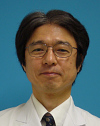 Tetsuo Yamaguchi, MD, PhD is Director of Department of Respiratory Medicine of Japan Railway Tokyo General Hospital and Vice President of the Hospital. He also serves as lecturer in respirology at Chiba University and Tokyo University, Faculty of Medicine. After finishing a doctorate concerning treatment of lung cancer at Chiba University, he served as a chest physician and contributed in setting up Respiratory Division in some hospitals around Tokyo. Since 1992 he has been studying about interstitial lung diseases and sarcoidosis and continuing to contribute as Secretary General in Japan Society of Sarcoidosis and Other Granulomatous Disorders( JSSOG) for eighteen years and now he serves as vice-president of the Society. He contributed in setting up Satoshi Okamoto Memorial Foundation of Pulmonary Fibrosis in 1994 and Foundation of Sarcoidosis in 1996 and serves as a member of steering committees of these foundations.
Tetsuo Yamaguchi, MD, PhD is Director of Department of Respiratory Medicine of Japan Railway Tokyo General Hospital and Vice President of the Hospital. He also serves as lecturer in respirology at Chiba University and Tokyo University, Faculty of Medicine. After finishing a doctorate concerning treatment of lung cancer at Chiba University, he served as a chest physician and contributed in setting up Respiratory Division in some hospitals around Tokyo. Since 1992 he has been studying about interstitial lung diseases and sarcoidosis and continuing to contribute as Secretary General in Japan Society of Sarcoidosis and Other Granulomatous Disorders( JSSOG) for eighteen years and now he serves as vice-president of the Society. He contributed in setting up Satoshi Okamoto Memorial Foundation of Pulmonary Fibrosis in 1994 and Foundation of Sarcoidosis in 1996 and serves as a member of steering committees of these foundations.
e-mail: tetsuo-yamaguchi@jreast.co.jp | personal page
Korea
Sarcoidosis is very rare in Korea. It was first reported in 1968 and only one more patient was found until the end of 1979. The first nationwide survey performed in 1992 by the Korean Academy of Tuberculosis and Respiratory Diseases (KATRD) revealed only 113 biopsy proven cases. The 2nd nationwide survey in 1999 found 309 new cases after the first survey. The incidence was gradually increasing from 17 cases in 1990 (0.040 / 100,000 population) to 59 cases in 1998 (0.125/ 100,000 population). The most prevalent age was in thirties (33%) and females were predominant (64.6%). The most common symptom was respiratory (42%), followed by skin lesion (23%), and aymptomatic (21%). Intrathoracic involvement was found in 89%, eye involvement in 16%, and peripheral lymph node enlargement in 14%. Radiological stage I was 45.3%, stage II was 45.0% and stage III was 6.7%. After 1999, there was no more nationwide survey, however, the numbers of newly diagnosed sarcoidosis in Asan Medical Center showed continuous increase; 1995-1999: 15 cases/year, 2000-2004: 32.4 cases/year, and 2005-2009: 55.5 cases/year.
Recently a nationwide survey on idiopathic interstitial pneumonia diagnosed according to ATS/ERS consensus classification from Jan. 1st, 2003 to Dec. 31st, 2007 was performed by KATRD. Total 2,186 cases were analyzed and idiopathic pulmonary fibrosis (IPF) (77.1%) was the most frequent disease, followed by NSIP (11.9%), COP (8.5%), AIP (1.1%), DIP (0.9%), RB-ILD (0.4%) and LIP (0.1%). The mean age of IPF, NSIP, COP, were 67.8, 57.1, and 57.7, respectively. In IPF male was predominant (72.4%), however, in NSIP, there was more female (62.5%) than male. Three year survival rate was 62% in IPF and five survival rate was 85% in both NSIP and COP.
Website information: There was no real website for foreigners. Followings are all Korean: KATRD (google translated), ILD Clinic in Asan Medical Center
No patients websites.
About the author
 Dong Soon Kim is a Professor of Medicine at the Asan Medical Center, University of Ulsan, Seoul, Korea. She has been interested in interstitial lung disease for many years and worked as a member of many ATS/ERS task force team; Workshop Committee for NSIP, Clinical Utility of BAL, New guideline for Diagnosis & treatment of IPF, and Revision of 2002 Consensus Classification of IIP. Although her major interest is IIP and connective tissue disease-related ILD, she was interested in sarcoidosis too and initiated the 1st nationwide survey on sarcoidosis in Korea and conducted 2nd nationwide survey. She has started “the Study Group in ILD in Korea” and still working in this group.
Dong Soon Kim is a Professor of Medicine at the Asan Medical Center, University of Ulsan, Seoul, Korea. She has been interested in interstitial lung disease for many years and worked as a member of many ATS/ERS task force team; Workshop Committee for NSIP, Clinical Utility of BAL, New guideline for Diagnosis & treatment of IPF, and Revision of 2002 Consensus Classification of IIP. Although her major interest is IIP and connective tissue disease-related ILD, she was interested in sarcoidosis too and initiated the 1st nationwide survey on sarcoidosis in Korea and conducted 2nd nationwide survey. She has started “the Study Group in ILD in Korea” and still working in this group.
E-mail: dskim615@gmail.com
Mexico
The three more frequent ILDs observed in Mexico are hypersensitivity pneumonitis (HP), idiopathic pulmonary fibrosis, and ILD associated to autoimmune diseases. In general, almost all of them present a chronic disease and consult months or even years after the beginning of symptoms. In this context, many cases of chronic HP evolve to fibrosis and are difficult to distinguish from IPF. Sarcoidosis is very unusual in Mexico . Of around 5000 ILDs that I have seen at my Institute or consulted from other Hospitals in Mexico, I have seen less than 15 cases of sarcoidosis, and usually in Mexicans with recent Caucasian background. I am not sure if this observation is related to the high frequency of tuberculosis or that Amerindians are not susceptible.We are doing clinical and basic research on these and other ILDs. For example, we are trying to determine if the diverse morphological manifestations (e.g. bronchiolocentric granulomatous pneumonitis, UIP-like, NSIP-like) that can be seen in HP show a similar or different clinical behavior. We are also looking for environmental and host risk factors associated with the development of IPF. In addition, we are trying to better understand the pathogenic mechanisms of these diseases doing research on wild-type and transgenic mice and isolated epithelial cells and fibroblasts. In this context, the WASOG and BAL meetings will be a relevant opportunity to discuss and learn not only for scientists and colleagues interested in these topics but also for pulmonologists that usually deal with these disorders.
About the author
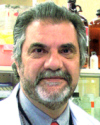 Moises Selman is the Director of Research at the National Institute of Respiratory Diseases in Mexico, and head of the Interstitial Lung Diseases Study group from 1983. He is adjunct professor at the Faculty of Sciences in the National Autonomous University of Mexico. He is also a Founding member and was Director of the Assembly of Interstitial Lung Diseases of the Latin-American Thoracic Society. Since 2005 is member of the Protocol Review Committee of Idiopathic Pulmonary Fibrosis, National Institutes of Health, USA. He has had a longstanding interest in ILDs, mainly in hypersensitivity pneumonitis and idiopathic pulmonary fibrosis, diseases where he has made important contributions both in the clinical area as well as in the pathogenic mechanisms. He has published approximately 200 original papers, reviews and book chapters. He has been recently named Associate Editor of the American Journal of Respiratory and Critical Care Medicine, and since 2009 is a member of the executive committee of the World Association of Sarcoidosis and Other Granulomatous disorders (WASOG).
Moises Selman is the Director of Research at the National Institute of Respiratory Diseases in Mexico, and head of the Interstitial Lung Diseases Study group from 1983. He is adjunct professor at the Faculty of Sciences in the National Autonomous University of Mexico. He is also a Founding member and was Director of the Assembly of Interstitial Lung Diseases of the Latin-American Thoracic Society. Since 2005 is member of the Protocol Review Committee of Idiopathic Pulmonary Fibrosis, National Institutes of Health, USA. He has had a longstanding interest in ILDs, mainly in hypersensitivity pneumonitis and idiopathic pulmonary fibrosis, diseases where he has made important contributions both in the clinical area as well as in the pathogenic mechanisms. He has published approximately 200 original papers, reviews and book chapters. He has been recently named Associate Editor of the American Journal of Respiratory and Critical Care Medicine, and since 2009 is a member of the executive committee of the World Association of Sarcoidosis and Other Granulomatous disorders (WASOG).
E-mail: moiselman@salud.gob.mx
The Netherlands
Prevalence and incidence
Although clear cut epidemiologic data are not available, the prevalence of interstitial lung diseases (ILD) in the Netherlands is estimated at approximately 100 per 100.000 inhabitants. Around 40 per 100.000 suffer from sarcoidosis, and around 15 per 100.000 from idiopatic pulmonary fibrosis (IPF). Incidence rates may vary between 10-20 per 100.000 for sarcoidosis and 5 per 100.000 for IPF. In IPF men are more frequently affected than women, and the majority of the patients are 60 years and over. Sarcoidosis, however, affects men and women equally, predominantly in the age of 20 to 40 years old. Approximately 8% of cases presents as the acute form of sarcoidosis, i.e. Löfgren’s syndrome.
Referral centers
In the Netherlands there is one referral center: the St. Antonius Hospital Nieuwegein and University Medical Center Utrecht. Special clinical and scientific interest in sarcoidosis and/or other interstitial lung diseases does also exist in other centers, especially Erasmus Medical Center Rotterdam, Sarcoidois Centre, Amsterdam Medical Center, and University Medical Center Groningen.
Main research focus regarding sarcoidosis and other ILD in the Netherlands can be summarized as follows: genetic predisposition and pharmacogenetics (Nieuwegein/Utrecht and Department of Pharmacology and Toxicology, FHML, Maastricht University), muscle strength, rehabilitation and quality of life in sarcoidosis (Ede/Maastricht University and Nieuwegein/Utrecht), biomarkers and molecular imaging (Nieuwegein/Utrecht, Maastricht University, Rotterdam, and Amsterdam), small fiber neuropathy (Leiden) and lung transplantation (Nieuwegein/Utrecht, Rotterdam, Groningen).
Patient Societies in your country
Sarcoidosis patients may contact the Dutch Sarcoidosis Society, lung fibrosis patients may contact the Dutch Pulmonary Fibroses organisation. Recently a Dutch patient society for lymphangioleiomyomatosis was launched.
About the author
 Jan C. Grutters MD, PhD, is a pulmonary physician at the St. Antonius Hospital Nieuwegein and University Medical Center Utrecht, and is appointed professor of Interstitial Lung Diseases. He is head of training pulmonology at St. Antonius Hospital, and participating member of the Lung Transplant Team Utrecht/Nieuwegein. In 2001 he was awarded an ERS Research Fellowship at the Imperial College and Brompton Hospital London, resulting in the Thesis: ‘Genetic polymorphisms and phenotypes in sarcoidosis’. Jan Grutters is a member of the Editorial Board of WASOG, of the medical advisory board of the Dutch Sarcoidosis Society, as well as the Dutch Pulmonary Fibrosis Society, and Worldwide LAM Patient Coalition. He supervises research into sarcoidosis and pulmonary fibrosis, with special focus on biomarkers and the genetic predisposition of ILD.
Jan C. Grutters MD, PhD, is a pulmonary physician at the St. Antonius Hospital Nieuwegein and University Medical Center Utrecht, and is appointed professor of Interstitial Lung Diseases. He is head of training pulmonology at St. Antonius Hospital, and participating member of the Lung Transplant Team Utrecht/Nieuwegein. In 2001 he was awarded an ERS Research Fellowship at the Imperial College and Brompton Hospital London, resulting in the Thesis: ‘Genetic polymorphisms and phenotypes in sarcoidosis’. Jan Grutters is a member of the Editorial Board of WASOG, of the medical advisory board of the Dutch Sarcoidosis Society, as well as the Dutch Pulmonary Fibrosis Society, and Worldwide LAM Patient Coalition. He supervises research into sarcoidosis and pulmonary fibrosis, with special focus on biomarkers and the genetic predisposition of ILD.
j.grutters@antoniusziekenhuis.nl | personal page
New Zealand
The prevalence of sarcoidosis is New Zealand is similar to other countries with a predominant European population, with a bimodal incidence of age at presentation for females and a seasonal (spring) presentation for patients with erythema nodosum. Patients of Polynesian ancestry (Maori or Pacific Islander) have a greater prevalence of extra-pulmonary sarcoidosis, particularly skin, soft tissue and sino-nasal disease, and conversely this population tends to have a lower prevalence of fibrotic pulmonary disease. The prevalence of other ILDs is also thought to be similar to Europe and the USA with the exception of pneumoconiosis – New Zealand has little mining or heavy industry. Patients of Polynesian ancestry have an apparent lower prevalence of idiopathic pulmonary fibrosis compared with European and Asian populations in New Zealand.
Active research in ILD in New Zealand includes the following: pulmonary involvement in connective tissue diseases, structure function studies in pulmonary fibrosis.
New Zealand has a five subspecialist academic hospitals and 15 medium to large general hospitals (population 4.5 million). There is an increasing pattern of referral of patients or clinical material to the regional or national centres of excellence, aided greatly by telemedicine. Shared models of care, utilizing regional or national expertise (radiologic, pathologic and clinical) have been adopted by many respiratory physicians working in centres without a specialized ILD clinic allowing multidisciplinary discussion and consensus agreement about diagnosis and treatment. All generally recommended treatments are available in New Zealand including one of the two novel antifibrotics, biologics and lung transplant. New Zealand respiratory physicians are usually members of the Thoracic Society of Australia and New Zealand, and sometimes members of the other international respiratory societies and thus utilise international clinical networks for collaboration and education. It is usual for NZ respiratory specialists to train for a period of time in an international centre of excellence and in turn the major teaching hospitals sometimes host research fellowships that are open to international graduates (updated February 2017)
About the author
 Prof Margaret Wilsher is a graduate of the University of Otago, New Zealand and completed post graduate studies in New Zealand, and doctoral study at the National Heart and Lung Institute and Royal Brompton Hospital, London, UK. Her doctoral research focused on the immunosuppressive properties of pulmonary surfactant. Since returning to New Zealand, Prof Wilsher’s research interests have been in sarcoidosis, the ILDs associated with connective tissue disorders and pulmonary vascular disease, and she has published over 70 papers on these and related topics. She maintains an active research and clinical collaboration with colleagues at the Royal Brompton, and was the TSANZ representative on the BTS/TSANZ ILD guidelines group. The ILD clinic at Auckland District Health Board is the only specialized clinic for rare and difficult ILD in New Zealand and is aligned with the national lung transplant service. Prof Wilsher is currently the Chief Medical Officer at ADHB and has an honorary appointment to the University of Auckland.
Prof Margaret Wilsher is a graduate of the University of Otago, New Zealand and completed post graduate studies in New Zealand, and doctoral study at the National Heart and Lung Institute and Royal Brompton Hospital, London, UK. Her doctoral research focused on the immunosuppressive properties of pulmonary surfactant. Since returning to New Zealand, Prof Wilsher’s research interests have been in sarcoidosis, the ILDs associated with connective tissue disorders and pulmonary vascular disease, and she has published over 70 papers on these and related topics. She maintains an active research and clinical collaboration with colleagues at the Royal Brompton, and was the TSANZ representative on the BTS/TSANZ ILD guidelines group. The ILD clinic at Auckland District Health Board is the only specialized clinic for rare and difficult ILD in New Zealand and is aligned with the national lung transplant service. Prof Wilsher is currently the Chief Medical Officer at ADHB and has an honorary appointment to the University of Auckland.
E-mail: mwilsher@adhb.govt.nz
Poland
Sarcoidosis is one of the most common interstitial lung diseases (ILD) in Poland. The prevalence does not change for years and is about 10 per 100 000, however there is a need to perform a more up-to-date epidemiologic study in Poland. The diagnosis of sarcoidosis is in accordance with current standards in many academic centers, pulmonary clinics and units. The gold standard in the diagnosis of the disease is the histological confirmation of the presence of sarcoid granuloma. In the last years the new low invasive method of EBUS/TBNA was introduced in almost all of diagnostic centers. Polish specialist A. Szlubowski is a coauthor of the results recently published in JAMA which confirmed the role of EBUS/TBNA in sarcoidosis. Bronchoalveolar lavage which fulfills the supplementary role in the diagnosis is commonly realized in many centers according to the standards published in Polish. In suspected cardiac sarcoidosis the MRI method started to be used in many centers.
The research studies on sarcoidosis are being carried out in many academic centers in Poland. Our researchers have achieved some significant success in this field. For example, Anna Dubaniewicz and coworkers confirmed the role of Mycobacterium tuberculosis heat shock proteins in pathogenesis of sarcoidosis and recently proposed a very attractive model of the pathogenesis of the disease (Human Immunology). The group of J. Domagala-Kulawik documented some important differences in the BAL pattern between smokers and nonsmokers sarcoid patients. P. Boros documented impaired lung compliance and DLCO in the large group of 830 patients with sarcoidosis. Recently, the multicenter study on psychological disturbances in sarcoid patients is conducted. Patients suffering from sarcoidosis may benefit from information on professional websites of health; SarkoStowarzyszenie. During the congress of the Polish Respiratory Society on May 2014 the scientific group of sarcoidosis will be launched. Five to ten doctors from Poland actively participate in each WASOG and BAL meeting and present the results of their studies. We stay in contact with the leaderships in WASOG and follow and popularize the knowledge of the field among pulmonologists and other specialists in publications, meetings and conferences.
About the author
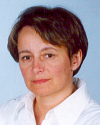 Joanna Domagala-Kulawik is the professor at the Department of Internal Medicine, Pneumonology and Allergology Medical University of Warsaw. In 1979 she graduated from the Medical University of Warsaw. She became a specialist in internal diseases (1987), in pathology (1994) and respiratory diseases (2012). She organized the laboratory of cytology. Her activities in clinical practice and research are focused on pulmonary cytopathology. She was trained in foreign centers: Center of Cytology Research University of Paris and BAL Laboratory of the Ruhrlandklinik, Essen, Germany. The subject of her doctoral thesis was BAL in systemic sclerosis (1996) and habilitation thesis- BAL and immunology of lung cancer (2004). In 2006 she organized BAL Scientific Group meeting within Polish Respiratory Society and edited Polish recommendations for induced sputum and BAL. She is member of many scientific societies, including the European Respiratory Society (active member of 1.5 Group) and she was elected in 2010 as a Polish National Delegate. She is a (co-)author of numerous scientific papers, book chapters, and the “Atlas of Pulmonary Cytopathology”. She is a reviewer of Polish and international scientific journals.
Joanna Domagala-Kulawik is the professor at the Department of Internal Medicine, Pneumonology and Allergology Medical University of Warsaw. In 1979 she graduated from the Medical University of Warsaw. She became a specialist in internal diseases (1987), in pathology (1994) and respiratory diseases (2012). She organized the laboratory of cytology. Her activities in clinical practice and research are focused on pulmonary cytopathology. She was trained in foreign centers: Center of Cytology Research University of Paris and BAL Laboratory of the Ruhrlandklinik, Essen, Germany. The subject of her doctoral thesis was BAL in systemic sclerosis (1996) and habilitation thesis- BAL and immunology of lung cancer (2004). In 2006 she organized BAL Scientific Group meeting within Polish Respiratory Society and edited Polish recommendations for induced sputum and BAL. She is member of many scientific societies, including the European Respiratory Society (active member of 1.5 Group) and she was elected in 2010 as a Polish National Delegate. She is a (co-)author of numerous scientific papers, book chapters, and the “Atlas of Pulmonary Cytopathology”. She is a reviewer of Polish and international scientific journals.
E-mail: domagalakulawik@gmail.com | Website: http://www.pneumonologia.wum.edu.pl
Romania
Romania
The epidemiological data of sarcoidosis in Romania were never subject of a coherent estimate. Among interstitial lung diseases, it is diagnosed as frequently as all the other ILDs together. In my hospital, the National Institute of Pulmonology “Marius Nasta” Bucharest, about 200 new cases are diagnosed every year.
Sarcoidosis is a systemic disease, nonetheless, most of the patients are referred to expert respiratory centers. More than half of the patients have a spontaneously remissive form of disease, while the others have relapsing or chronic (about 10%) evolution, being subject of our long-term follow-up.
In our Institute we have all the means for diagnosing sarcoidosis: HRCT, broncho-alveolar lavage, transbronchial biopsy (EBUS), mediastinoscopy, lung biopsy, complex lung function testing (DLCO), serum angiotensin converting enzyme. Other biomarkers (like soluble IL2 receptor) are available in other laboratories.
One can note the very few cases of neurologic and cardiac sarcoidosis registered, probably due to underdiagnosis due to low suspicion of sarcoidosis in general practice.
In cases needing treatment, oral corticosteroids for a duration of at least 12 months is the standard of care. We recently used more and more methotrexate for patients not tolerating corticosteroids, or association of corticosteroids with immunosuppresants (azathioprine) for chronic cases.
Since 2012, a Working Group for Interstitial Lung Diseases and Sarcoidosis was created within the Romanian Society of Pulmonology. The aims of the group are mainly educational, to organize lectures, postgraduate courses, conferences for increasing the awareness and knowledge on the interstitial lung diseases among Romanian pulmonologists. A Romanian Guideline for the diagnosis and management of ILDs was published in 2015. Two national conferences with international invited speakers were organized so far. An on-line National Registry dedicated to ILDs and sarcoidosis (REGIS: www.regis.ro) was started in 2013. The registry managed to put together only a small proportion of the cases truly diagnosed, due to voluntary reporting and no dedicated funding. In the registry, the number of sarcoidosis cases equals the IPF cases, only the more severe sarcoidosis cases being reported. Still, the registry is a strong educational platform: the anonymized cases build up a case database structured according to diagnosis, offering information on symptoms, imaging, BAL, biopsy and lung function in various ILDs.
About the author
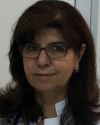 Irina Strâmbu is an associate professor at the University of Medicine and Pharmacy “Carol Davila” Bucharest, working in the National Institute of Pulmonology “Marius Nasta” Bucharest. She is a pulmonology physician, with expertise in interstitial lung diseases. She is the founder and coordinator of the Working Group for Interstitial Lung Diseases and Sarcoidosis within the Romanian Society of Pulmonology and initiator of the REGIS registry. She authored several publications on ILDs: coordinator of the Romanian Guideline for ILDs, papers about REGIS registry and IPF.
Irina Strâmbu is an associate professor at the University of Medicine and Pharmacy “Carol Davila” Bucharest, working in the National Institute of Pulmonology “Marius Nasta” Bucharest. She is a pulmonology physician, with expertise in interstitial lung diseases. She is the founder and coordinator of the Working Group for Interstitial Lung Diseases and Sarcoidosis within the Romanian Society of Pulmonology and initiator of the REGIS registry. She authored several publications on ILDs: coordinator of the Romanian Guideline for ILDs, papers about REGIS registry and IPF.
She is a member of the ILD Group of the European Respiratory Society, WASOG and American Thoracic Society.
Email: istrambu@yahoo.com
Russia
In Russia we have 4-9 new cases per 100.000 adults per year. The prevalence has a wide variation in different areas of Russia (according to activity of MD and scientists) from 5.8 to 47 per 100.000 adults. More than 80% of the patients have classical intrathoracic sarcoidosis in which the X-ray was diagnostic. Prof. Mikhail Ilkovich, MD, created a register of patients with sarcoidosis and department of interstitial lung diseases in Sint Petersburg. He published several books about sarcoidosis and lung dissemination. Prof. Eugeniy Shmelev, MD, (Moscow) published key papers about the diagnosis of sarcoidosis and interstitial lung diseases. Furthermore, he studied an original method of sarcoidosis treatment: plasmapheresis, extrathoracic lymphocyte modification. Prof. Sergey Borisov, MD, compared different traditional treatment options of sarcoidosis, and created an original recommendation for sarcoidosis treatment. Prof. Alexander Vizel, MD, (Kazan) studied different methods of sarcoidosis treatment, lung function testing and prognosis of this disease. In 2010 he was one of main authors of the Russian national monography “Sarcoidosis” (Ed. by A.Chuchalin). Sarcoidosis in Russia treat now in GP-offices (policlinics), we stopped hospitalisation this patients in TB-dispensaries. So now we need a new knowledge in sarcoidosis diagnostics and treatment. That is why I urge colleagues to go to the joint meetings of the WASOG and BAL.
We have one support site: http://sarcoidosis.narod2.ru which is in russian, but can be viewed in english via the google translated version
In Russia we have no patient societies. Special clinics or referral centres for sarcoidosis or interstitial lung diseases in Russia:
- Prof. Alexander Chuchalin, MD, Acad., All Russia Institute of Pulmonology, Moscow, www.pulmonology.ru - chuchalin@inbox.ru
- Prof. Mikhail Ilkovich, MD , The main pulmonologist of St. Petersburg, mih.ilkovich@yandex.ru
- Prof. Eugeniy Shmelev, MD, The chief of granulomatosis department of Central Research institute of tuberculosis of Russian Medical Academy, shmelev@mgts.ru
- Prof.Sergey Borisov, MD, Moscow TB center, barsik@online.ru
- Prof. Alexander Vizel, MD, Kazan Medical University, lordara@inbox.ru
About the author
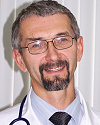 Alexander A. Vizel, 1957 studied Medicine at the Kazan Medical University Russia (1974-1980). Thereafter, he started his clinical specialization in All-Union research institute of pulmonology (Leningrad, 1980-1982) and he became a pulmonary physician. He finished two dissertations (Systemic hypertension in chronic lung diseases, 1985, Respiratory insufficiency in lung tuberculosis, 1991). He is head of Phtisiopulmonology and Chair of Kazan Medical University since 1989, and professor since 1992, the main pulmonologist of Tatarstan Republic since 1995. In 2008 he became the national delegate of Russia in ERS (2008-2011). He is a principal investigator in international clinical trials since 1997 (COPD, pneumonia, asthma). He (co) authored more than 550 publications (184 in central journals and monographs). He performs research in sarcoidosis since 1981. Since 1990 he is a member of Russian Respiratory Society, and a gold member of ERS since 1999.
Alexander A. Vizel, 1957 studied Medicine at the Kazan Medical University Russia (1974-1980). Thereafter, he started his clinical specialization in All-Union research institute of pulmonology (Leningrad, 1980-1982) and he became a pulmonary physician. He finished two dissertations (Systemic hypertension in chronic lung diseases, 1985, Respiratory insufficiency in lung tuberculosis, 1991). He is head of Phtisiopulmonology and Chair of Kazan Medical University since 1989, and professor since 1992, the main pulmonologist of Tatarstan Republic since 1995. In 2008 he became the national delegate of Russia in ERS (2008-2011). He is a principal investigator in international clinical trials since 1997 (COPD, pneumonia, asthma). He (co) authored more than 550 publications (184 in central journals and monographs). He performs research in sarcoidosis since 1981. Since 1990 he is a member of Russian Respiratory Society, and a gold member of ERS since 1999.
E-mail: lordara@inbox.ru | Website: www.pulmonology.ru
Serbia
Serbia, officially the Republic of Serbia is a landlocked country located at the crossroads of Central and Southeastern Europe, covering the southern part of Carpathian basin and the central part of the Balkans. The country is quite popular for sport games however, little is known about medical history of this country and quite a few facts about Serbian medicine today particularly the occurrence of some of the diseases. The first researches on sarcoidosis in Serbia have started many years ago with the first pioneer works of Professor Olga Djuric and her brother Branislav Djuric. It was my pleasure to start my first steps as sarcoidologist with them. As we all know the prevalence of sarcoidosis reveals the interest of the doctors dealing with this multisystem, multiorgan disease to diagnose it. The prevalence of sarcoidosis in Serbia is 16.5 /100 000 (Institute of Epidemiology, Medical School Belgrade, Serbia, Professor Lj. Denic-Markovic, with an estimated population of 7,306,677 inhabitants). Unfortunately we do not have Central register of sarcoidosis patients. Up-to-date, the official number of registered sarcoidosis patients in Serbia is 1562, and they are diagnosed and treated in the Department of Sarcoidosis, Clinic of Pulmonary Diseases, Clinical center of Serbia, in Belgrade, Head Professor Violeta Vucinic. Biopsy positive diagnosis of sarcoidosis is estimated in 96% of our patients. Similar to other countries, it appears to be more common in women, (70%) and may present later than the classical age of onset between 20-40 years. The mean age of our sarcoidosis patients is approximately 45years. Lung sarcoidosis is seen in 96% (different radiological stage of the lung disease) while extrapulmonary involvement varies from 3% of splenic sarcoidosis to 12 % of eye sarcoidosis.
In the year 2000 the official sarcoidosis association was founded by Professor Doctor Violeta Vucinic entitled: the Yugoslav Association of Sarcoidosis.
Yugoslav Association of Sarcoidosis is founded as a national organization, with the main goal to encourage the research of sarcoidosis in this part of the world. All sarcoidosis patients are members of the Association and doctors interested in this filed as well. We all work as a very good trained team in order to help our patients to coup with the disease and to improve their quality of life related to it. Following up our sarcoidosis patients for almost 3 decades, we discovered a lot of them with chronic relapsing form of the disease. 47.7% of all patients have acute onset of the disease, 30% chronic (with symptoms and signs not typical for sarcoidosis). 23.7% of our patients with an acute onset of sarcoidosis, later on develop chronic, long lasting disease. The difficulties these patients have affect their quality of life immensely.
Several other tasks and goals of the Yugoslav Association of Sarcoidosis are:
- Organizing regular annual , conferences, and scientific meetings;
- Developing and maintaining continuing medical education for medical specialists in this filed;
- Producing scientific publications and bulletins to promote and encourage the research or educational work in the field of sarcoidosis
Working on these goals the Yugoslav Association of Sarcoidosis organized several international sarcoidosis conferences with the participants from all over the world. First International Sarcoidosis Conference was organized in Belgrade, Serbia in the year 2002 supported by the Medical School, University Belgrade. It was first CME Conference on sarcoidosis organized in this country. In the year 2006 the International CME Conference was organized by the YAS entitled “ADVANCES IN MANAGEMENT OF SARCOIDOSIS & IINTERSTITIAL LUNG DISEASES”, 13-14 October 2006, Belgrade, Serbia. The Conference was granted by the European Board for Accreditation in Pulmonology- EBAP and European Union of Medical Specialists UEMS with 12 European credits). Similar Conference was organized in the year 2007, this time it was “ FIRST BALKAN CONFERENCE ON MULTISYSTEM SARCOIDOSIS”. 25-26 September 2007, Belgrade, Serbia. European Board for Accreditation in Pulmonology- EBAP and European Union of Medical Specialists UEMS granted the Conference with 9 European credits). The Conference was strongly supported by the government of Serbia, Ministry of Science. In the year 2009 the Yugoslav Association of Sarcoidosis organized an international conference entitled:” NEW FINDINGS IN SARCOIDOSIS: DIAGNOSIS, THERAPY AND QUALITY OF LIFE”. European Board for Accreditation in Pulmonology- EBAP and European Union of Medical Specialists UEMS with 12 European credits). The Conference was strongly supported by the government of Serbia, Ministry of Science.
PAST AND CURRENT STUDIES AND PROJECTS INTERNATIONAL:
- Genotyping-Phenotyping in Sarcoidosis -Multycenter European Study ( Study Coordinator Professor Joachim Muller-Quernheim, University Freiberg, Germany until 2011
SUPPORTED BY THE GOVERNMENT OF SERBIA:
- Improving the quality of life in patients with sarcoidosis, Ministry of Labor and Social Policy, Republic of Serbia, Security of Persons with Disability Department 2007
- Evaluation of prognostic parameters in patients with sarcoidosis, Ministry of Science, Republic of Serbia until the end of 2010 (No 145091)
Awards: Violeta Vucinic : Sarcoidosis research Foundation Award (2006 Chest Conference, Salt Lake City, Utah, USA)
About the author
 Violetta Vucinic is Professor of Internal Medicine and Pulmonology at the Medical School of the University of Belgrade, Serbia. She is head of the Department of Sarcoidosis and other Granulomatous Disorders of the Pulmonology Clinic of the Clinical Center in Belgrade, Serbia. She has more than 30 years experience with sarcoidosis patients. She is the President and Founder of the Yugoslav Association of Sarcoidosis. She was the founder and organizer of the Yugoslav Association of Sarcoidosis (2000), the chair of the Association of Sarcoidosis of Serbia and Monte Negro (2003), organizer and Chairman of Annual Conferences on Sarcoidosis with international participants (2000-2009) and organizer of the First Balkan Conference of Sarcoidosis. The Yugoslav Association of Sarcoidosis is a national organization, founded in 2000 by doctors interested in sarcoidosis. The main goal of the Yugoslav Association of Sarcoidosis is development and research of sarcoidosis in this part of the world. In 2006 she received the Sarcoidosis research Foundation Award (2006 Chest Conference, Salt Lake City). She is involved in research projects concerning genotyping-Phenotyping in Sarcoidosis, quality of life in patients with sarcoidosis and evaluation of prognostic parameters in patients with sarcoidosis.
Violetta Vucinic is Professor of Internal Medicine and Pulmonology at the Medical School of the University of Belgrade, Serbia. She is head of the Department of Sarcoidosis and other Granulomatous Disorders of the Pulmonology Clinic of the Clinical Center in Belgrade, Serbia. She has more than 30 years experience with sarcoidosis patients. She is the President and Founder of the Yugoslav Association of Sarcoidosis. She was the founder and organizer of the Yugoslav Association of Sarcoidosis (2000), the chair of the Association of Sarcoidosis of Serbia and Monte Negro (2003), organizer and Chairman of Annual Conferences on Sarcoidosis with international participants (2000-2009) and organizer of the First Balkan Conference of Sarcoidosis. The Yugoslav Association of Sarcoidosis is a national organization, founded in 2000 by doctors interested in sarcoidosis. The main goal of the Yugoslav Association of Sarcoidosis is development and research of sarcoidosis in this part of the world. In 2006 she received the Sarcoidosis research Foundation Award (2006 Chest Conference, Salt Lake City). She is involved in research projects concerning genotyping-Phenotyping in Sarcoidosis, quality of life in patients with sarcoidosis and evaluation of prognostic parameters in patients with sarcoidosis.
violetavucinic@gmail.com
Spain
The epidemiology of sarcoidosis in Spain has not been well studied. A retrospective epidemiological study in district hospitals from Catalonia between 1979 and 1989 showed a prevalence of 1.36 cases per 100.000 inhabitants. However, the frequency is probable higher. The clinical characteristics of the disease in our country are well known. Löfgren syndrome (association of erythema nodosum with bilateral hilar lymphadenopathy) is the most frequent clinical manifestation. Bilateral hilar lymphadenopathy as an accidental finding in non-symptomatic patients is frequent as well. Pulmonary involvement requires a differential diagnosis with other interstitial lung diseases. Cutaneous involvement is frequent and an ophthalmic examination should be always performed. Other manifestations such as neurological and cardiac sarcoidosis are less frequent but well recognized. A cooperative study between our hospital in Barcelona with the Karolinska Institute from Stockholm and the Royal Brompton hospital in London demonstrated the presence of genetic predisposition for Löfgren’s syndrome. There is no official register concerning sarcoidosis in Spain. Until now our institution, the Bellvitge University Hospital, in Barcelona, is the only Spanish institution with a multidisciplinary team devoted to sarcoidosis. The sarcoidosis group was created during the seventies of the past century and it has a wide experience in this field. Recently, the database of patients with sarcoidosis at our hospital has been updated and new clinical and basic research studies, some of them in international collaboration, are in progress. In 2013, the Spanish society of patients with sarcoidosis was created (Asociación Nacional de Enfermos de Sarcoidosis-ANES).
About the author
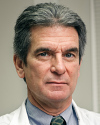 Juan Mañá is Associated Professor of Medicine at the University of Barcelona, and Staff member of the Department of Internal Medicine at the Bellvitge University Hospital, in Barcelona, Spain. He has had a longstanding interest in sarcoidosis and he supervises the unique Sarcoidosis clinic in Spain. In 1990, he completed his thesis focused on prognostic factors in sarcoidosis. He has performed clinical and basic research on sarcoidosis, and has published original articles in peer-reviewed journals, book chapters, reviews, editorials and monographs, and he has been a reviewer of several international journals. He joined to the World Association of Sarcoidosis and other Granulomatous Disorders (WASOG) in 1991 and he was a member of the Executive Committee of WASOG from 2005 to 2011.
Juan Mañá is Associated Professor of Medicine at the University of Barcelona, and Staff member of the Department of Internal Medicine at the Bellvitge University Hospital, in Barcelona, Spain. He has had a longstanding interest in sarcoidosis and he supervises the unique Sarcoidosis clinic in Spain. In 1990, he completed his thesis focused on prognostic factors in sarcoidosis. He has performed clinical and basic research on sarcoidosis, and has published original articles in peer-reviewed journals, book chapters, reviews, editorials and monographs, and he has been a reviewer of several international journals. He joined to the World Association of Sarcoidosis and other Granulomatous Disorders (WASOG) in 1991 and he was a member of the Executive Committee of WASOG from 2005 to 2011.
E-mail: jmana@bellvitgehospital.cat
South Africa
Sarcoidosis is fairly common in South Africa but the prevalence has not been accurately studied (thought to be 4-25 per 100, 000). A large Cape Town series had 66% females and 34% males and 72% Mixed Race, 21% Black, 7% White and 4% Asian. The age range was 12-71 years (mean 37). Almost all (99%) had pulmonary sarcoid with 31% having involvement of lymph nodes and 25% skin and eye. Multi-organ involvement was present in 37%. The most common method of diagnosis was transbronchial lung biopsy (>50%), with other common sites being skin and peripheral or mediastinal lymph nodes.
At presentation, 20%, 47%, 14% and 18% had CXR Stage 1, 2, 3 and 4 respectively. After 5 years of follow up, this had changed to 15%, 28%, 11% and 33%, i.e. significant increase in Stages 0 and 4, and decrease in Stage 2. Lung function at presentation were volumes of about 80±22% predicted and TLCO 69±23% predicted, with no significant change over 5 years follow up. 77%, 50%, 7% and 2% respectively required steroid therapy, prolonged steroid therapy, azathioprine or methotrexate. 8% of patients developed respiratory failure and 6% died.
There are few significant differences between the races: (1) Blacks and Mixed Race more eye and skin disease, (2) Blacks more prolonged steroid therapy, (3) Lung function worse in Mixed Race and males (probably due to more smoking).
Specialist referral centres in South Africa:
- Prof Gillian Ainslie, University of Cape Town & Interstitial Lung Disease Clinic, Groote Schuur Hospital, Cape Town (Tel: +2721404 4369, Gillian.Ainslie@uct.ac.za )
- Prof Elvis Irusen, University of Stellenbosch & Tygerberg Hospital, Cape Town (eirusen@sun.ac.za)
- Prof Umesh Lalloo, University of KwaZulu-Natal & Albert Luthuli Hospital, Durban (Lalloo@ukzn.ac.za)
- Prof Charles Feldman, University of the Witwatersrand & Charlotte Maxeke Johannesburg Academic Hospital, Johannesburg (Charles.Feldman@wits.ac.za)
- Prof Michelle Wong, University of the Witwatersrand & Chris Hani Baragwanath Hospital, Johannesburg (Michelle.Wong@wits.ac.za)
- Dr Michiel Prins, University of the Free State & Universitas Hospital, Bloemfontein (Tel: +27514053612, PrinsM@ufs.ac.za)
- Prof James Joubert (private practice in Stellenbosch, Western Cape) (tabanchu@mweb.co.za)
- Drs Luke Krige & David Stickells (private practice in Port Elizabeth, Eastern Cape, lpkrige@iafrica.com & stickells@mweb.co.za)
There are no current local sarcoid patient support groups, societies or websites.
Other ILDs seen commonly in South Africa include idiopathic pulmonary fibrosis (IPF), interstitial pneumonitis related to collagen vascular disease (especially SLE), hypersensitivity pneumonitis (mainly due to pigeons & drugs) and cryptogenic organising pneumonitis (COP).
About the author
 Prof. Gillian Ainslie was registered as specialist physician & specialist pulmonologist in 1986. In 1997 she was elected F.R.C.P. (London, UK). In 1998 she was appointed Ad Hominem as associate professor of medicine. Currently, she is a specialist pulmonologist at Groote Schuur Hospital and the University of Cape Town Lung Institute, and is the Deputy Head of the Respiratory Clinic. She is a Past President of both the South African Thoracic Society (SATS) and the National Asthma Education Programme (NAEP). Her main research and clinical interest is in interstitial lung disease, particularly sarcoidosis, idiopathic pulmonary fibrosis and hypersensitivity pneumonitis. She also has interests in pulmonary vascular disease and asthma education.
Prof. Gillian Ainslie was registered as specialist physician & specialist pulmonologist in 1986. In 1997 she was elected F.R.C.P. (London, UK). In 1998 she was appointed Ad Hominem as associate professor of medicine. Currently, she is a specialist pulmonologist at Groote Schuur Hospital and the University of Cape Town Lung Institute, and is the Deputy Head of the Respiratory Clinic. She is a Past President of both the South African Thoracic Society (SATS) and the National Asthma Education Programme (NAEP). Her main research and clinical interest is in interstitial lung disease, particularly sarcoidosis, idiopathic pulmonary fibrosis and hypersensitivity pneumonitis. She also has interests in pulmonary vascular disease and asthma education.
E-mail: gillian.ainslie@uct.ac.za | personal page
Sweden
The yearly incidence of sarcoidosis in Sweden is 15-20/100.000 individuals. Patients with Löfgren´s syndrome are common and constitute about one third of all new patients with sarcoidosis. There are excellent registers in Sweden, providing good opportunities for epidemiological research. Most of the sarcoidosis research is concentrated to Stockholm, although other sites are active as well. The following description is valid for some of the ILD research made at Karolinska Institutet in Stockholm. For more detailed descriptions of the research: http://ki.se/ki/jsp/polopoly.jsp?d=25804&l=en
We previously described a strict correlation between HLA-DRB1*0301 and lung accumulated CD4+ T cells expressing the T cell receptor AV2S3 gene segment. Detailed analyses of the AV2S3+ BAL T cells strongly indicate that they have reacted against a sarcoidosis-associated antigen. One important line of research is therefore focusing on antigen-specific responses, but there are also studies on the immune response in a broader sense. We have in collaboration with colleagues in Germany eluted peptides bound to HLA-DR molecules from BAL fluid cells and sequenced them by mass spectrometry. Thus we have been able to identify antigens locally presented during an inflammatory condition. These peptides, and other candidate antigens such as the mycobacterial enzyme mKatG, are used for in vitro stimulation experiments (collaboration with Johns Hopkins) to see if any of them is the long sought-after sarcoidosis antigen. We are increasing the sensitivity of the proteomic techniques to enable identification of HLA-derived peptides in single individuals. Techniques have been developed to identify membrane-associated proteins of BAL cells. Our findings of strong associations between certain HLA-types and the disease course enables us to characterize the immune response in two subgroups of sarcoidosis patients (DRB1*03 versus DRB1*14 and *15), each with a very distinct prognosis, in order to understand what factors may lead to resolution versus perpetuation of the inflammatory reaction. The HLA-typing is also analyzed in relation to involvement of different organs.
Another area of promising research is the role that inflammation of the lungs may play in recently diagnosed rheumatoid arthritis and polymyositis, and which effect immunosuppressant therapy has on the inflammatory process.
We urge our colleagues to go to the WASOG-meetings to interact and help move these fields of research forward.
About the author
 Johan Grunewald is professor of experimental respiratory medicine at the Department of Medicine, Karolinska Institutet in Stockholm, Sweden. He is head of the Respiratory Unit at the Department of Medicine and deputy dean of the Department of Medicine. He is also head of the Karolinska Institute Network for Circulation and Respiration. With a background in immunology, he has had a longstanding interest in sarcoidosis, using immunological tools to address questions concerning the etiology of sarcoidosis, and to reveal mechanisms of the inflammatory process in this disease. Also, genetic and proteomic research in sarcoidosis are of central interest. He has published approximately 130 original papers, reviews and book chapters and acquired several international grants for research in sarcoidosis. He is on the editorial board of Clinical Respiratory Journal, and is since 2005 a member of the executive committee of the World Association of Sarcoidosis and Other Granulomatous disorders (WASOG). In 2008, he was appointed General Secretary of WASOG.
Johan Grunewald is professor of experimental respiratory medicine at the Department of Medicine, Karolinska Institutet in Stockholm, Sweden. He is head of the Respiratory Unit at the Department of Medicine and deputy dean of the Department of Medicine. He is also head of the Karolinska Institute Network for Circulation and Respiration. With a background in immunology, he has had a longstanding interest in sarcoidosis, using immunological tools to address questions concerning the etiology of sarcoidosis, and to reveal mechanisms of the inflammatory process in this disease. Also, genetic and proteomic research in sarcoidosis are of central interest. He has published approximately 130 original papers, reviews and book chapters and acquired several international grants for research in sarcoidosis. He is on the editorial board of Clinical Respiratory Journal, and is since 2005 a member of the executive committee of the World Association of Sarcoidosis and Other Granulomatous disorders (WASOG). In 2008, he was appointed General Secretary of WASOG.
E-mail: johan.grunewald@ki.se | personal page
Turkey
Sarcoidosis is chronic inflammatory granulomatous disease characterized with non-caseating granulomas. Its a rare disorder , the incidence and prevalence is variable, depending on the geographic area, race, genetic and eviromental factors.
The annual incidence of sarcoidosis in Turkey was 4/100.000 inhabitants, the average age of patients is 43years, and the ratio of women to men 2:1. The most frequent organ involvement in Turkish patients were as follow: lung (99%), skin(16.4%), lymph node(13.3%), joints(6.8%), eye(5.1%), central nervous system(2.7%), cardio-vascular(2.2%), respectively(Turkish Thorax Society data). As I mentioned previously the sarcoidosis is a “rainbow” with so many colors and multidisciplinary approach is essential for understanding it.
An official and nationwide referral system for sarcoidosis and other granulomatous diseases does not exist in Turkey yet. We have a multidisciplinary approach to sarcoidosis and interstitial lung disease (ILD) in our University Hospital, which is an WASOG Sarcoidosis Clinic since 2019. During this period, we made many publications including epidemiology, genetic, clinical and treatment of this mysterious disease. Recently we started the Turkish REgistry of Sarcoidosis (TReSar) which aim to make national and international collaborative studies to highlight into the etiopathogenesis, genetic and treatment approaches to the disease.
About the author
.jpg) Senol Kobak is Professor of Internal Medicine and Rheumatology and currently he is the head of both Department in Istinye University, Istanbul, Turkey.
Senol Kobak is Professor of Internal Medicine and Rheumatology and currently he is the head of both Department in Istinye University, Istanbul, Turkey.
He has had a interest in sarcoidosis and other granulomatous diseases from many years and he supervises the WASOG Sarcoidosis clinic in Turkey.
He has performed clinical and basic research on sarcoidosis, and has published more than 130 original papers in peer-reviewed journals, book chapters, reviews, and editorials, the majority of them concerning sarcoidosis. He is an author of two books over sarcoidosis:” Approach to a neglected disease: sarcoidosis – is it only mimicker or a primary rheumatic disease? 2013; “Difficult sarcoidosis cases”, 2017. His main research and clinical interest is in sarcoidosis and other granulomatous diseases, interstitial lung disease, connective tissue diseases- associated ILD, vasculitis and autoinflammatory diseases. He is the member of Turkish Society of Rheumatology, Turkish Medical Association and WASOG.
e-mail: senolkobak@yahoo.com
United States of America
South Carolina
The United States is not only a large country but contains heterogeneous populations of various racial and ethnic groups. For these reasons, the prevalence and phenotypic expression of sarcoidosis vary around the nation. The disease is of relatively high prevalence in African Americans, especially in those living in the Southeast United States. Another area where sarcoidosis has high prevalence is in the North Midwest portion of the country where many individuals are of Northern European extraction. African Americans tend to have more severe disease and more extrapulmonary disease than Caucasian Americans. The lifetime risk of sarcoidosis in the United States is estimated at 2.1% in African Americans males, 2.7% in African American females, and 0.7% in Caucasian males and 1.0% in Caucasian females.
Sarcoidosis research in the United States is occurring in terms of both clinical and basic science research. Many major United States medical centers are presently participating in a multinational clinical trail of an IL-12 and IL-23 blocker (ustekinumab) and a tumor necrosis factor antagonist (golimumab) for the treatment of lung and skin sarcoidosis. Other American researchers are examining the putative antigens and inflammatory pathways that lead to the development of sarcoidosis lesions. The National Institutes of Health continues to support sarcoidosis research in terms of grant offerings.
There are numerous active sarcoidosis patient societies in the United States. One major one is the Foundation for Sarcoidosis Research (FSR) located in Chicago, Illinois. They are a reliable source in terms of locating local patient sarcoidosis support groups around the USA, locating experienced American sarcoidosis physicians, and identifying American sarcoidosis research centers.
IPF is another common ild in the USA with an estimated prevalence of approximately 20/100,000 in males and 13/100,000 in females. The Pulmonary Fibrosis Foundation is a major IPF patient organization in the USA.
We urge American colleagues with an interest in sarcoidosis and other ild to attending the WASOG-BAL meetings. This state of the art meeting will allow concerned clinicians and researchers to discuss treatment strategies as well as discuss new areas of research in an attempt to eliminate these diseases.
Ohio
Sarcoidosis in the United States affects African-Americans more frequently than Caucasians. In the Detroit area, the age-adjusted annual incidence of sarcoidosis is about three-fold higher in African Americans (35.5/100,000) than Caucasians (10.9/100,000). This racial pattern is consistent with other studies in the U.S. population. A recent investigation also suggested that radiographic stage-matched African-American patients have higher granuloma densities than Caucasians at the time of diagnosis. Sarcoidosis is also prevalent in Puerto Ricans living in the continental U.S.
Similar to other countries, it appears to be more common in women, and may present later than the classical age of onset between 20-40 years. Studies in military personnel suggest that sarcoidosis is most prevalent in the Southeast part of the U.S. and rare in the more arid west.
A comprehensive epidemiologic study of 736 incident sarcoidosis cases revealed that lung (95%), skin (16%), lymph node (15), eye (12%) and hepatic sarcoidosis (12%) are the most commonly-affected organs. Disease presentation and outcome vary markedly by race, with extrapulmonary organ involvement and chronic progressive disease more likely in African-Americans.
Besides clinical differences, there are ample data that sarcoidosis susceptibility genes vary according to race. For example, HLA-DPB1*0101 is associated with sarcoidosis in African-Americans whereas HLA-DRB1*1501 confers risk in U.S. Caucasians. A polymorphism in the BTNL2 gene was confirmed to associate with sarcoidosis in U.S. Caucasians but was not in African-Americans.
Multiple research projects are ongoing in the U.S., including studies focusing on the potential role of mycobacteria as an etiologic agent, several genome-wide association scans in various populations, an ongoing multicenter treatment trial with biologic agents, and a number of pathogenetic investigations. A trial of infliximab in central nervous system sarcoidosis is to begin soon.
About the authors
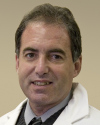 Dr. Marc A. Judson is a Professor of Medicine at the Medical University of South Carolina in Charleston, South Carolina, USA. He has published more than 120 original papers, the majority of them concerning sarcoidosis. He directs one of the largest sarcoidosis clinics in the USA and has participated in more than 45 clinical sarcoidosis trials. He is an Associate Editor of Respiratory Medicine, a member of the Editorial Board of Chest and the WASOG journal. He is a member of the Executive Committee of WASOG.
Dr. Marc A. Judson is a Professor of Medicine at the Medical University of South Carolina in Charleston, South Carolina, USA. He has published more than 120 original papers, the majority of them concerning sarcoidosis. He directs one of the largest sarcoidosis clinics in the USA and has participated in more than 45 clinical sarcoidosis trials. He is an Associate Editor of Respiratory Medicine, a member of the Editorial Board of Chest and the WASOG journal. He is a member of the Executive Committee of WASOG.
E-mail: judsonm@mail.amc.edu
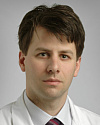
Daniel A. Culver is a Staff Physician at the Cleveland Clinic in Cleveland, Ohio, USA. He directs one of the largest sarcoidosis centers in the United States. His research interests include the pathobiology of granulomatous inflammation and the role of gene-environment interactions in sarcoidosis.
E-mail: culverd@ccf.org | personal page
